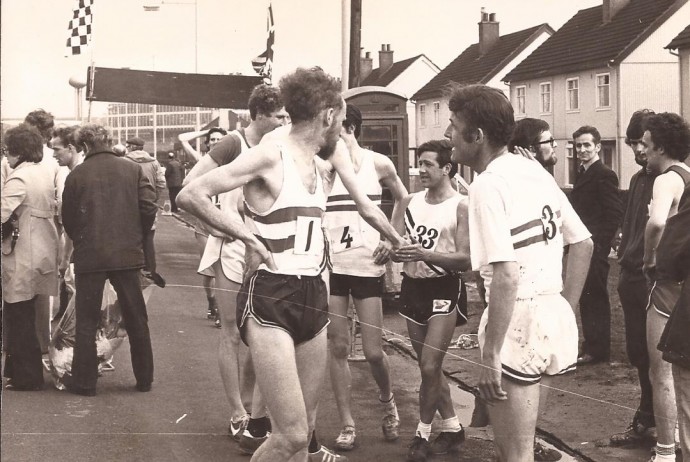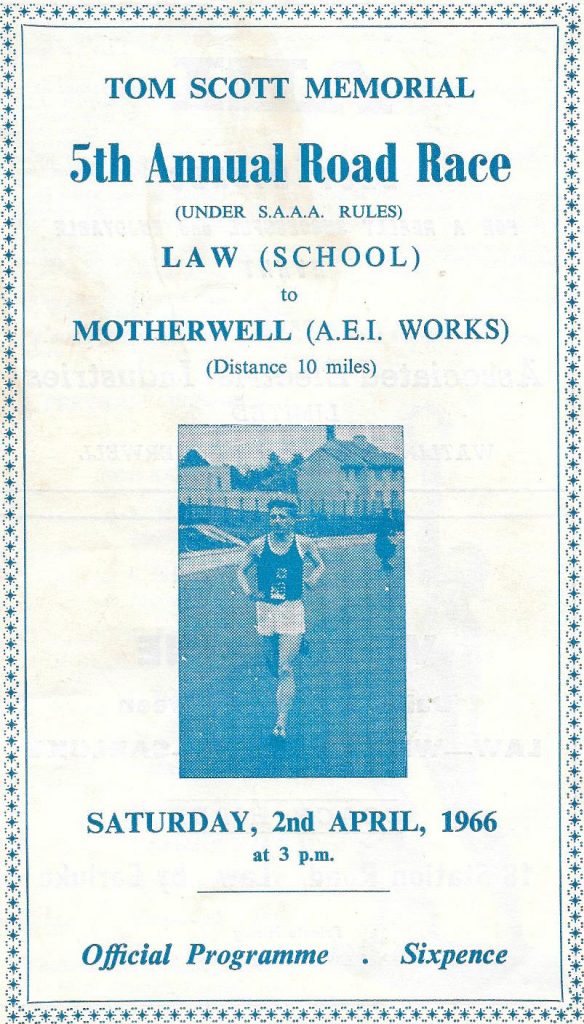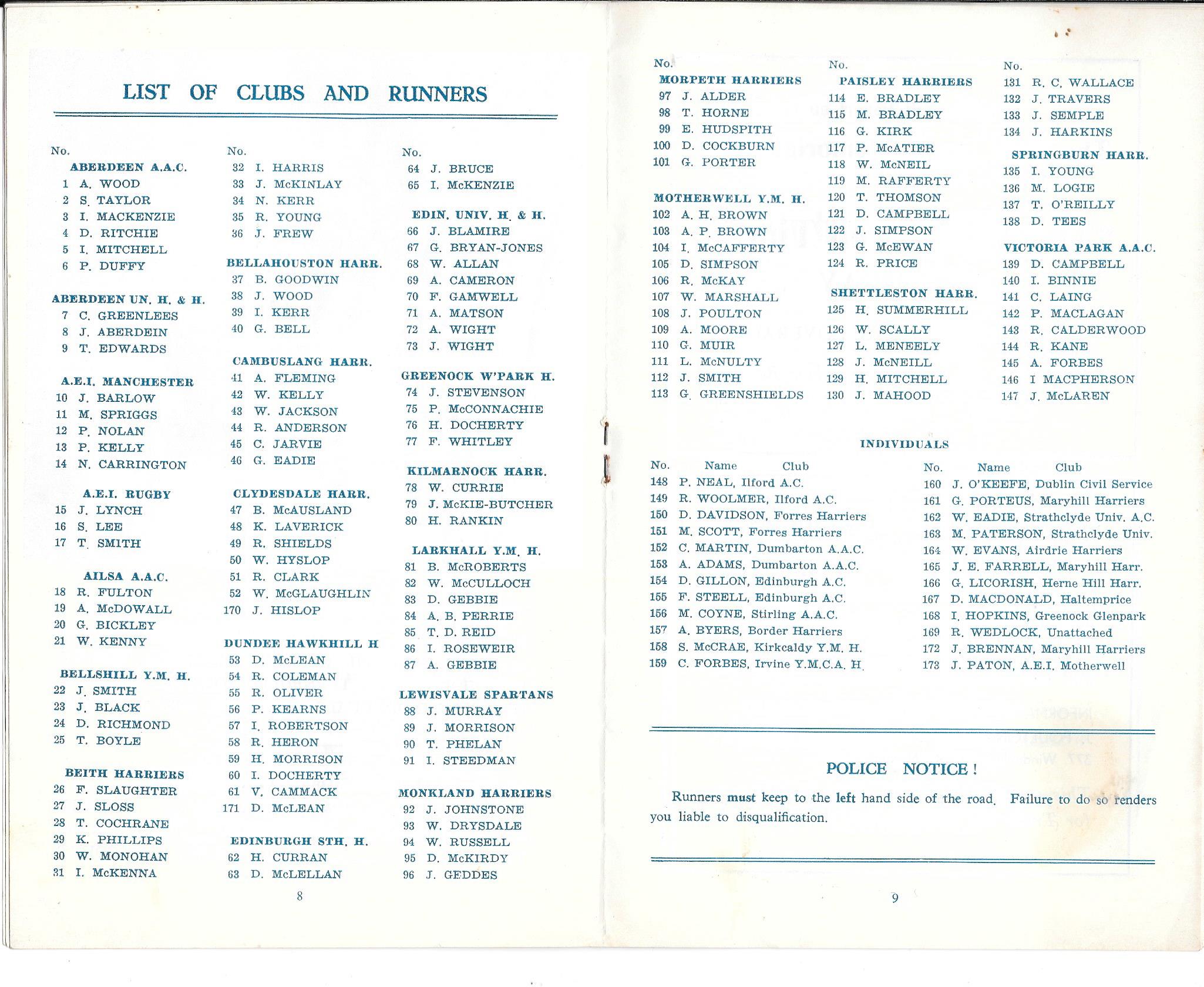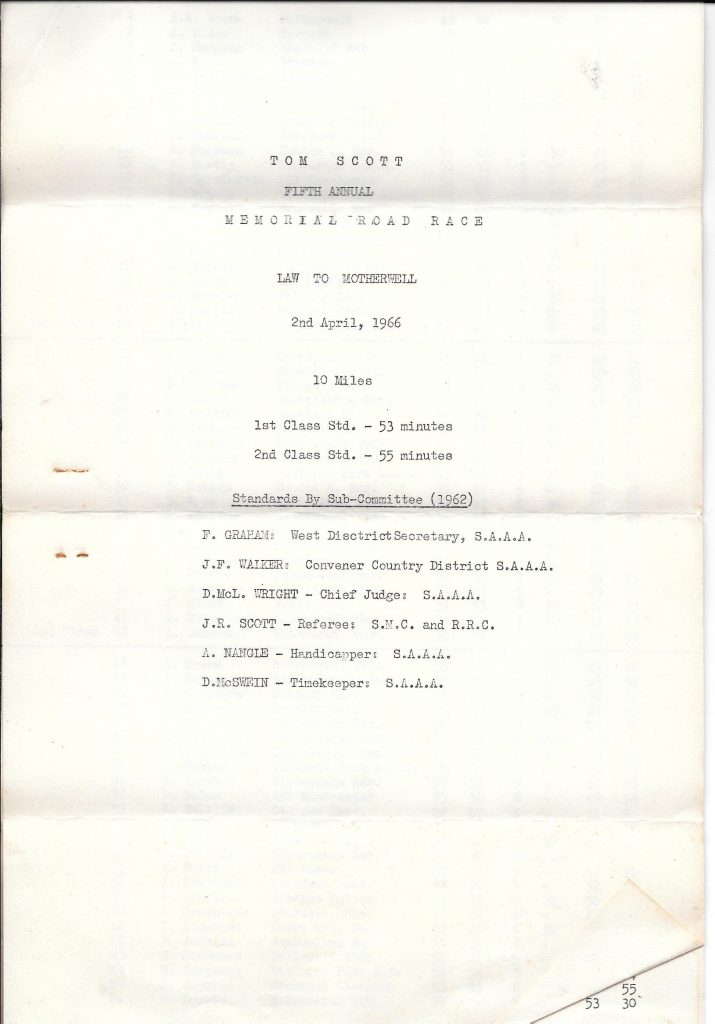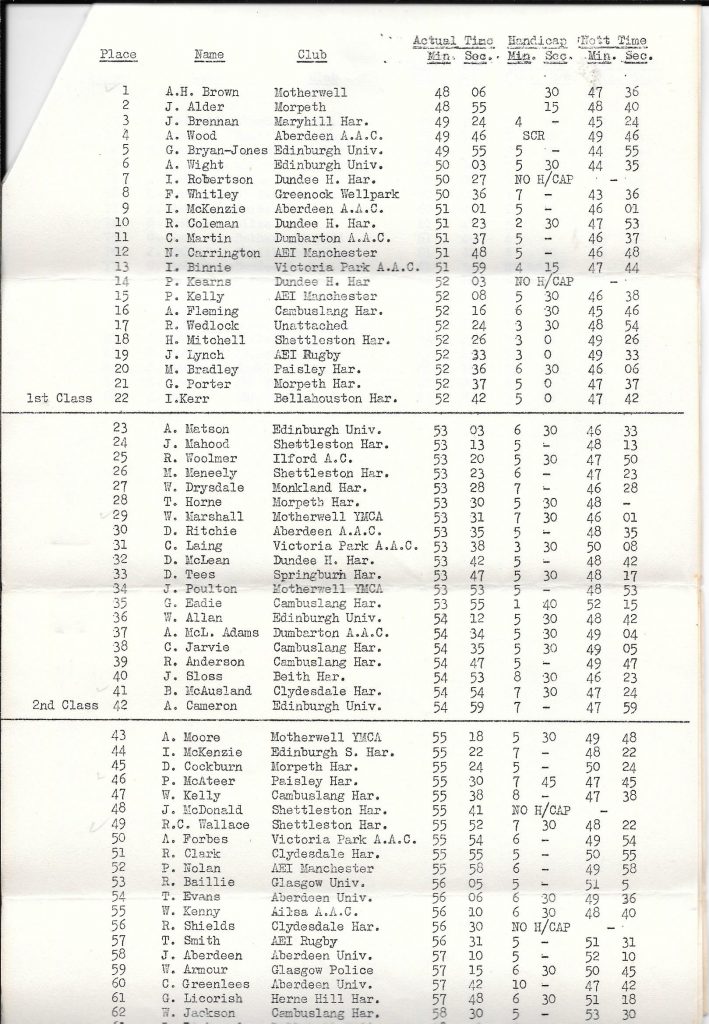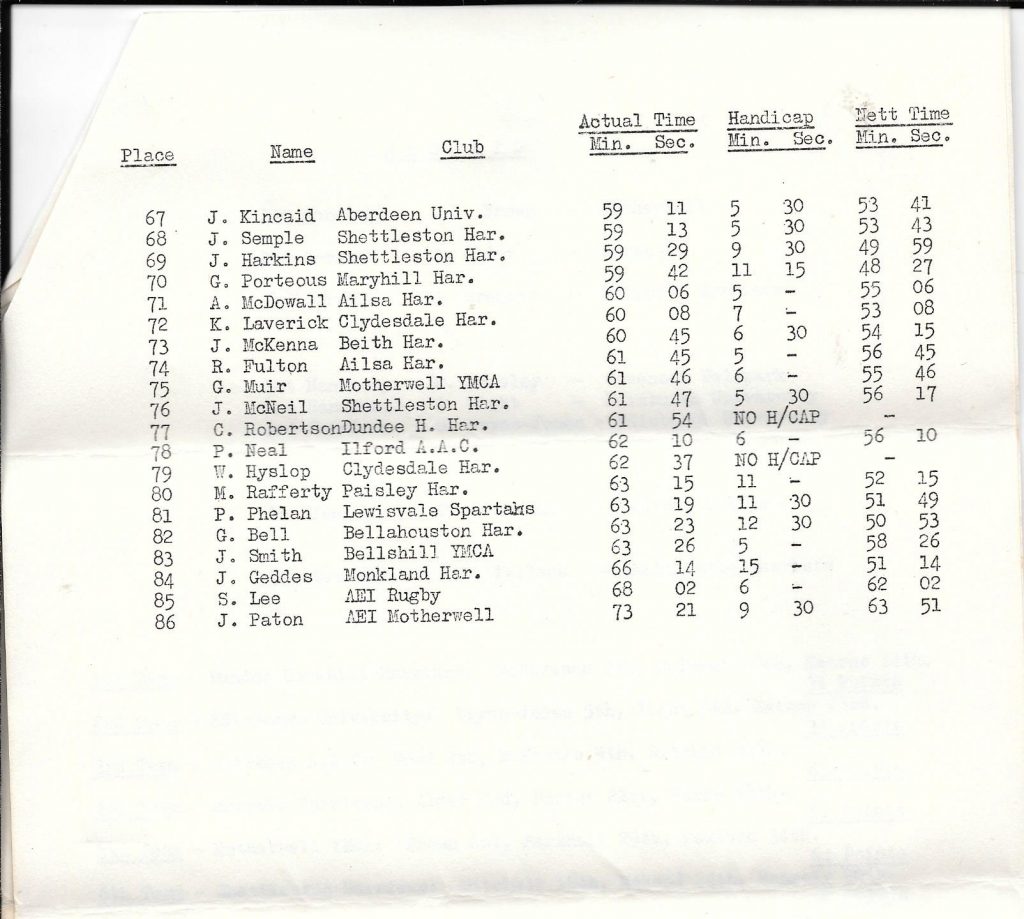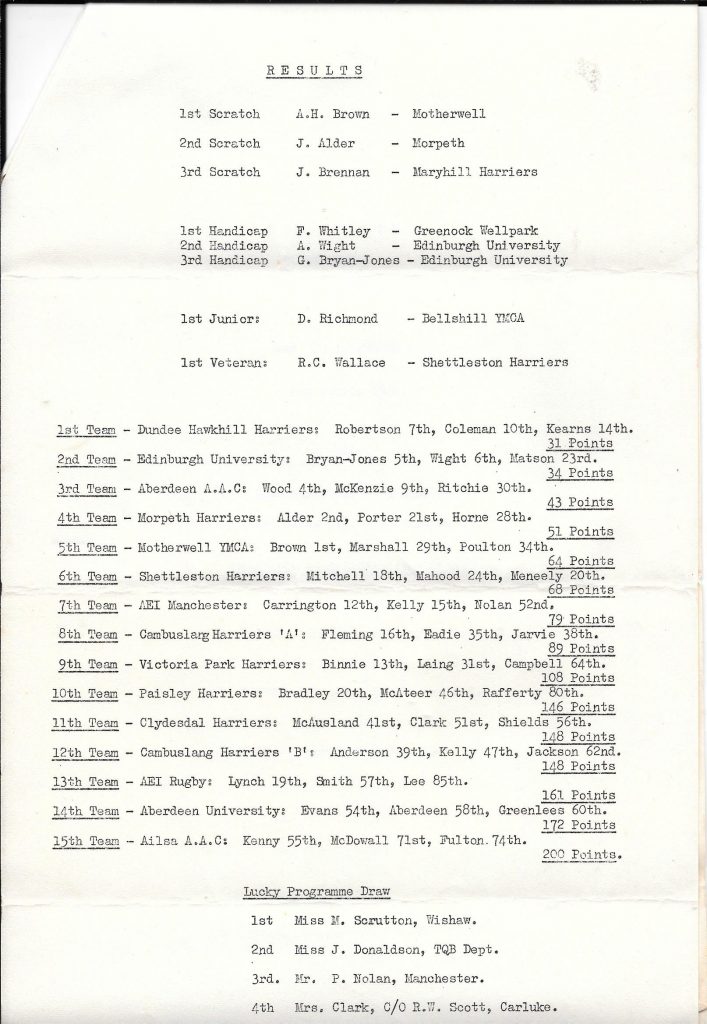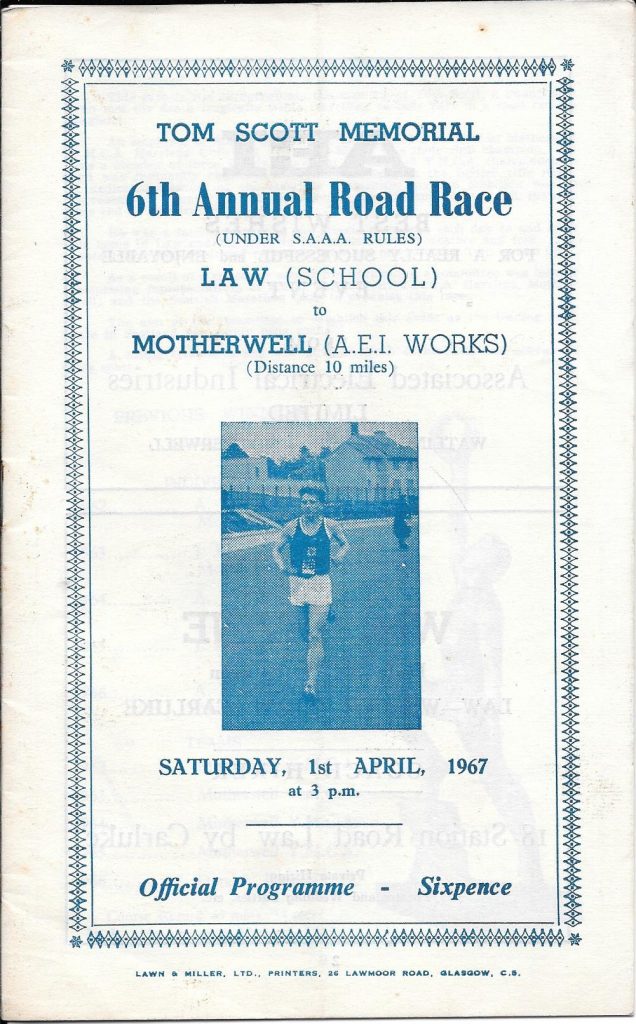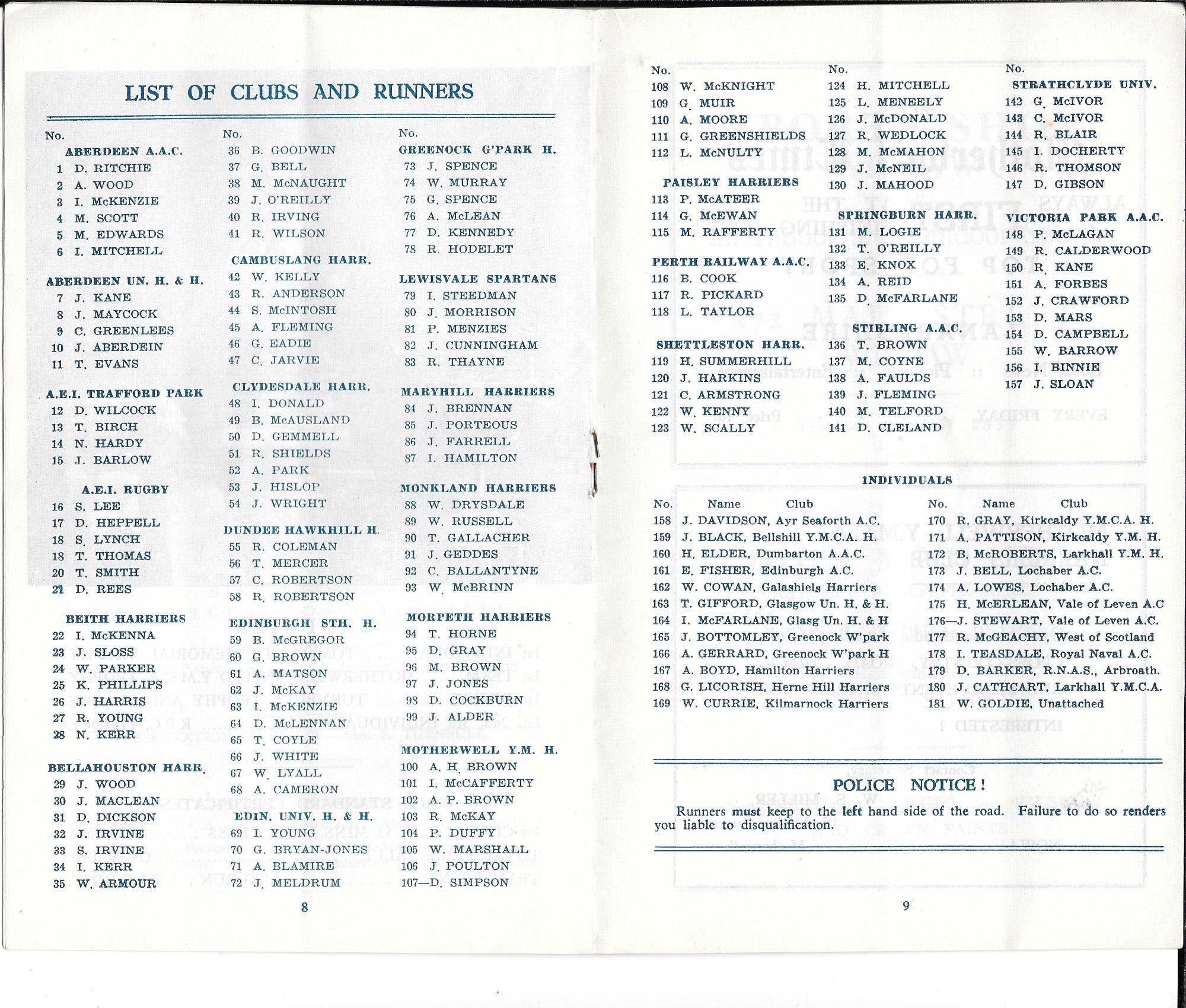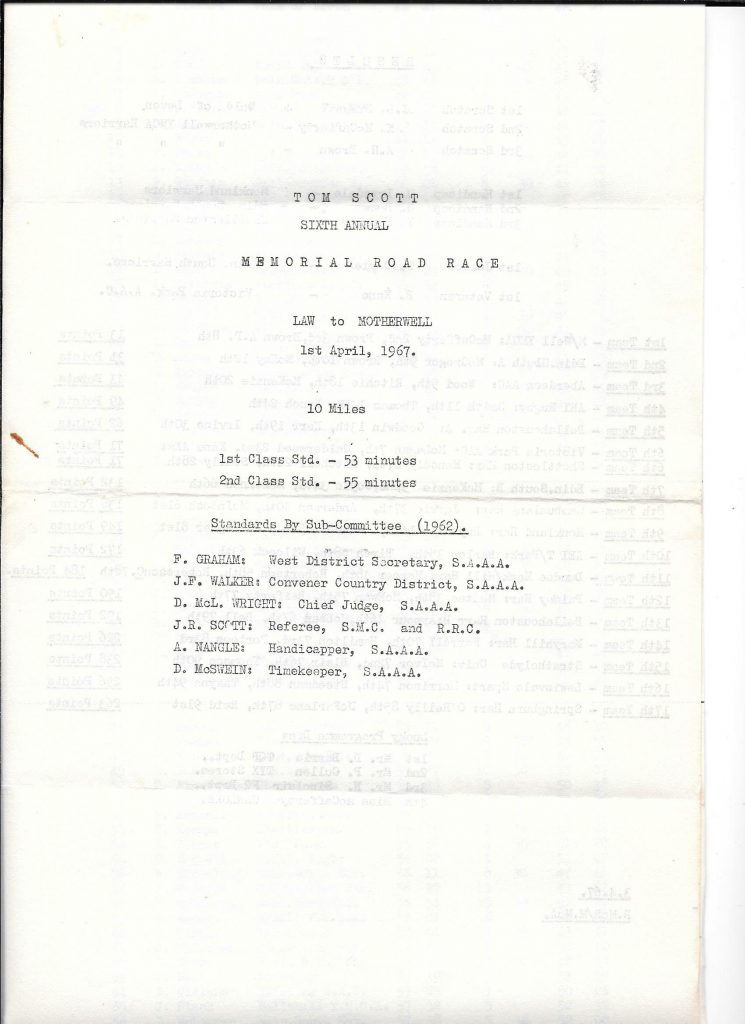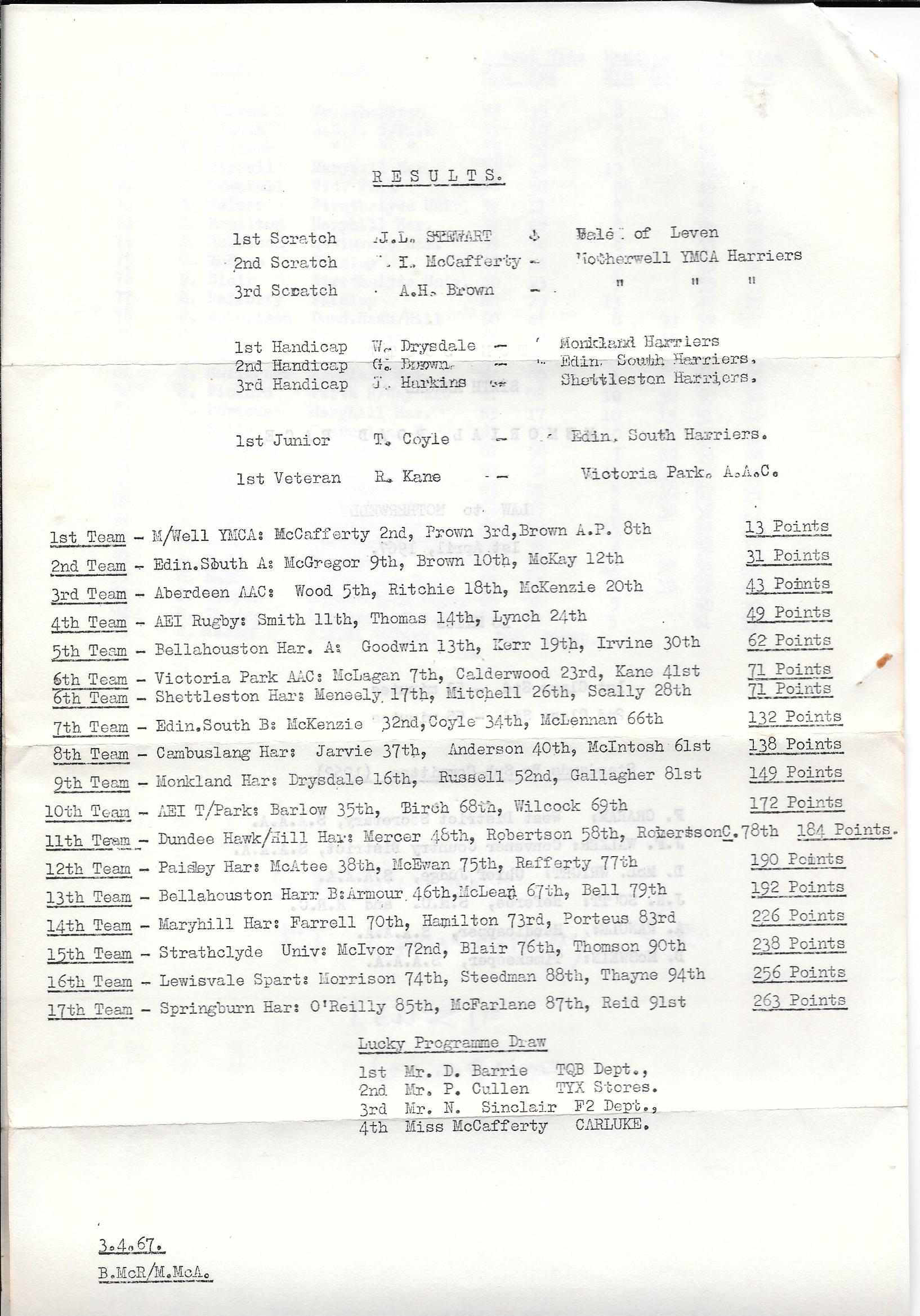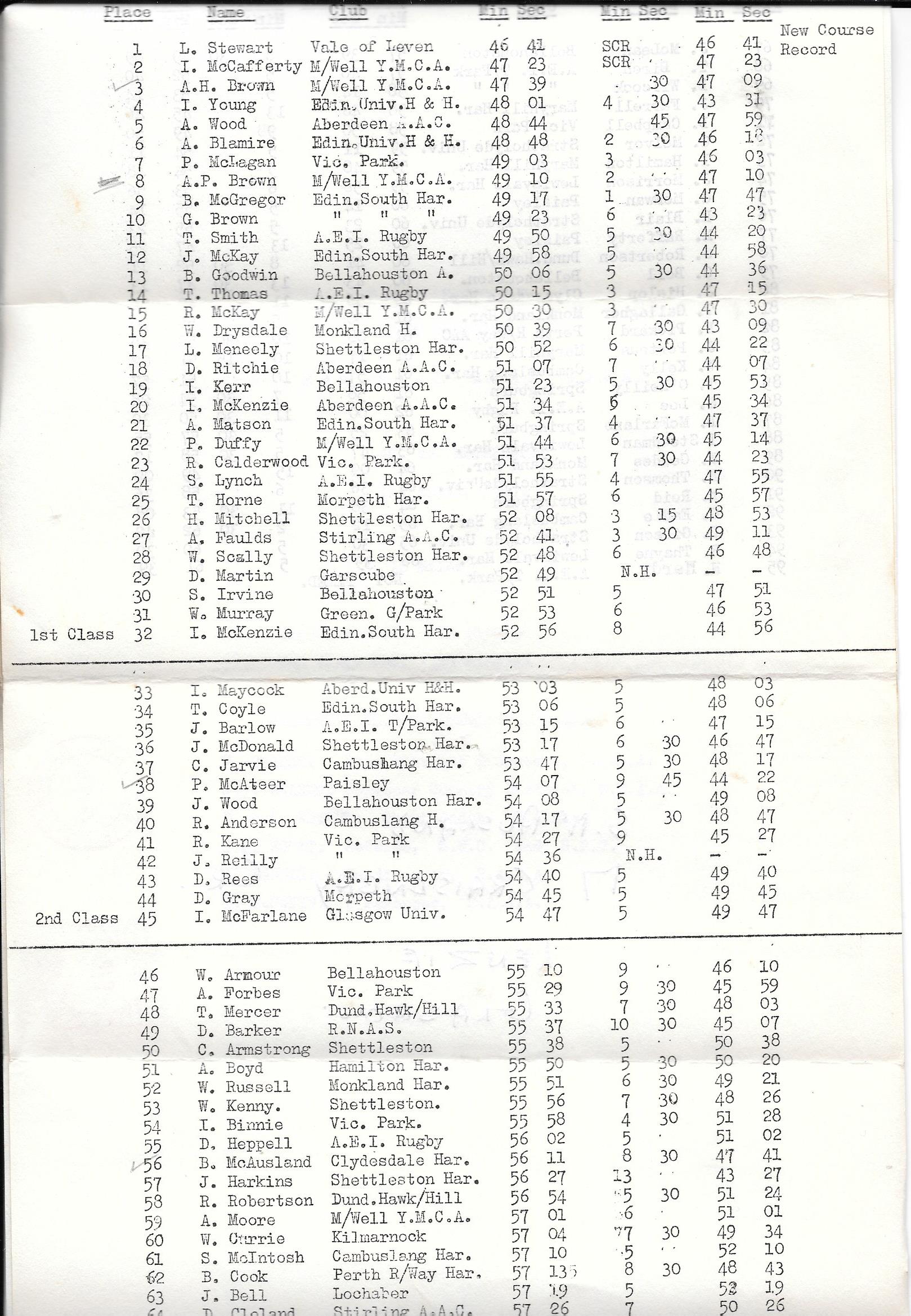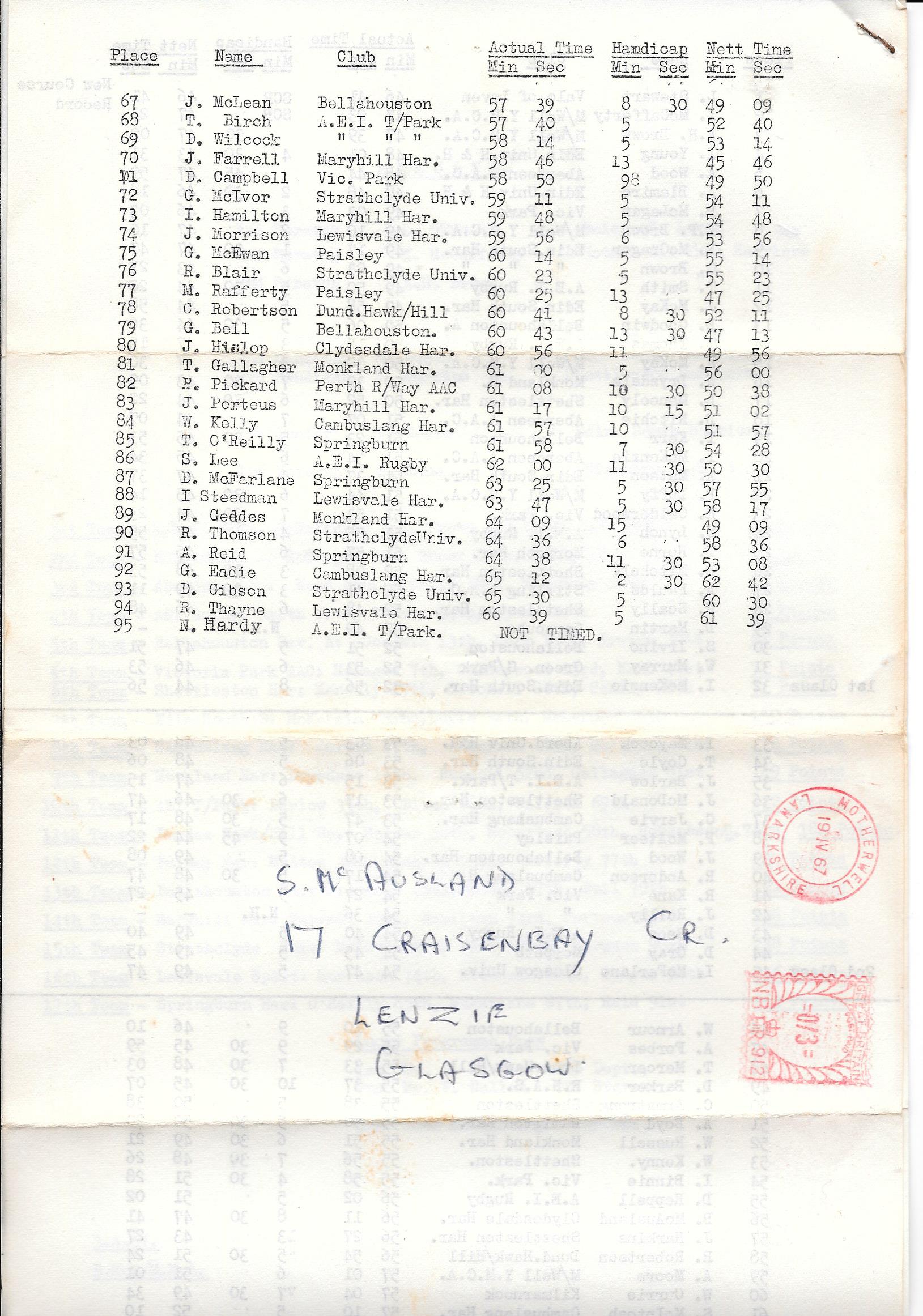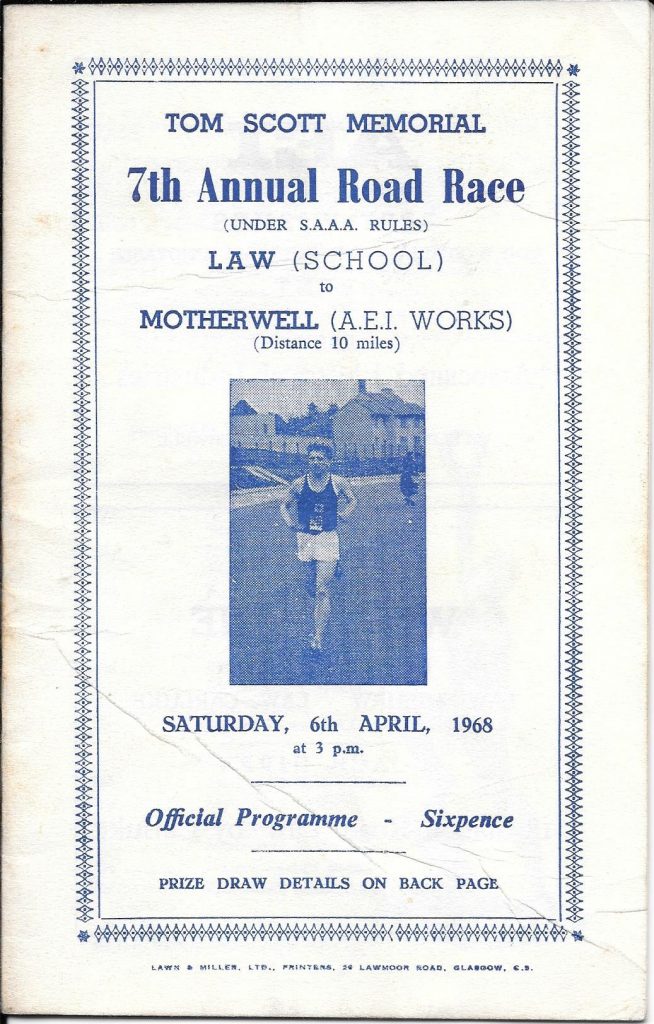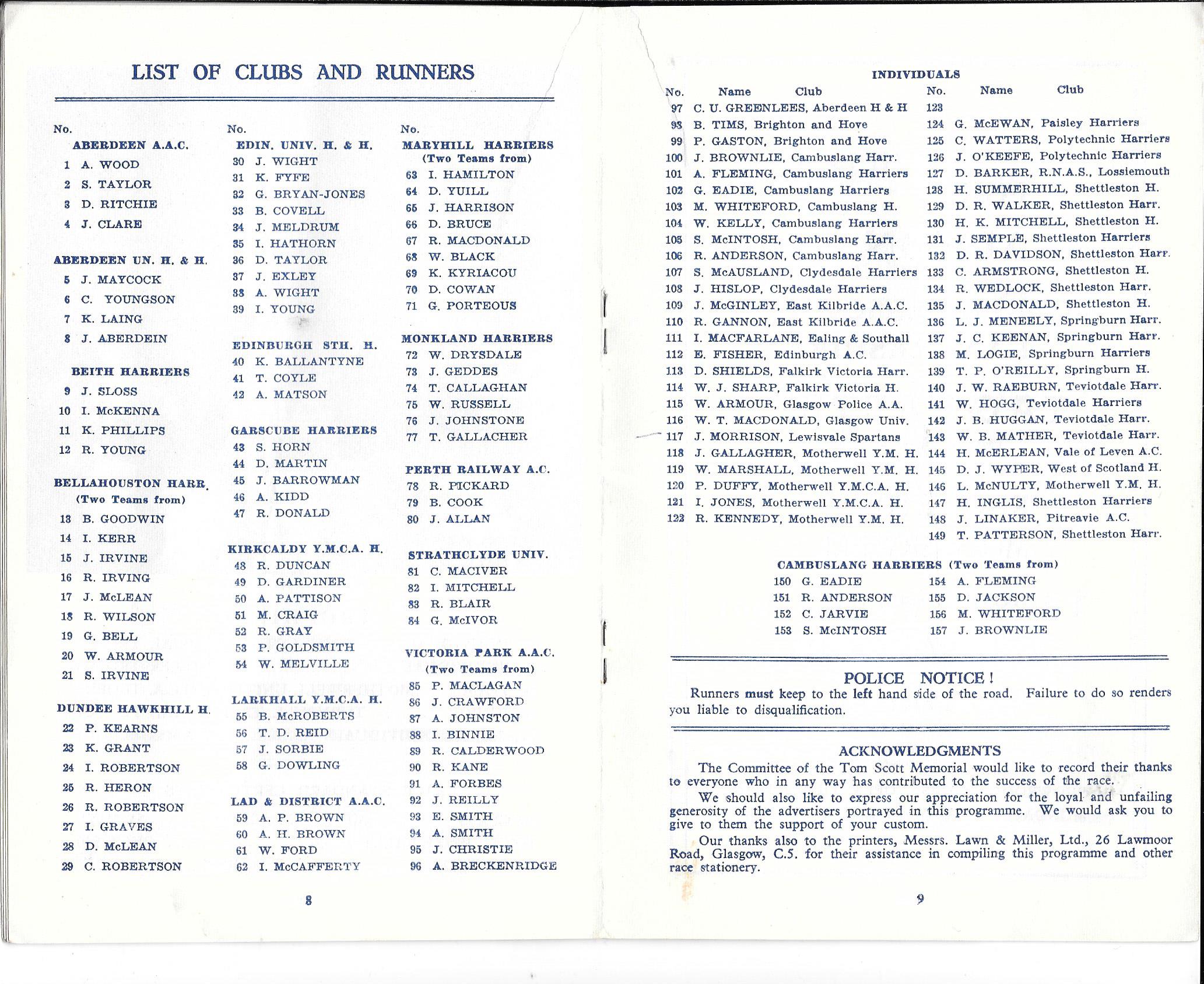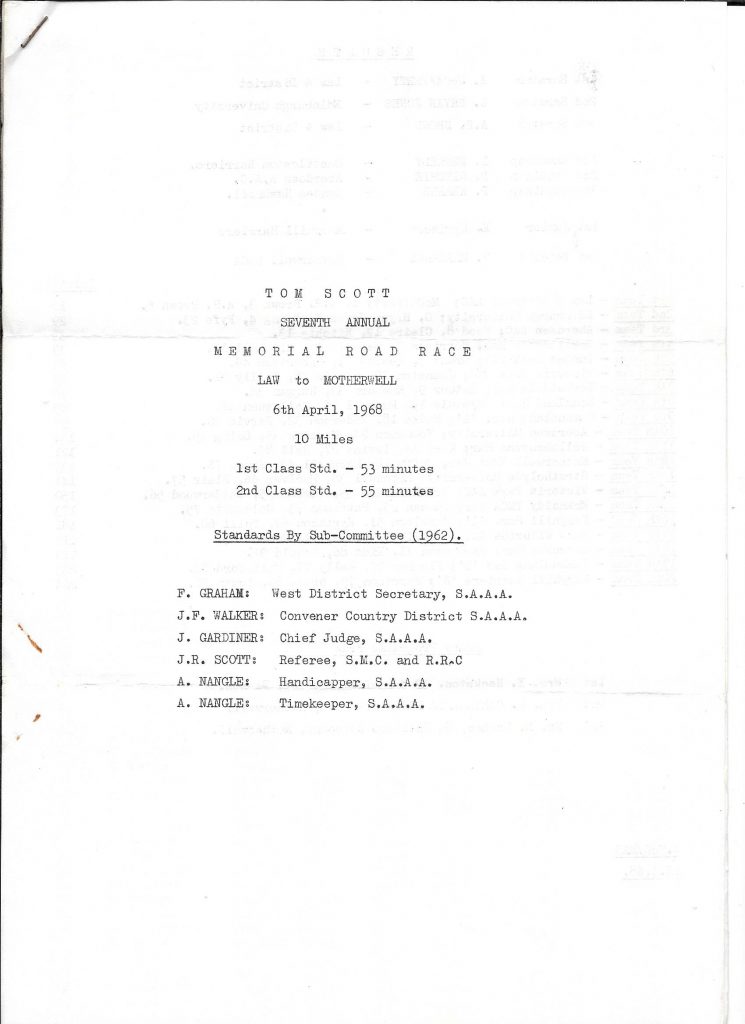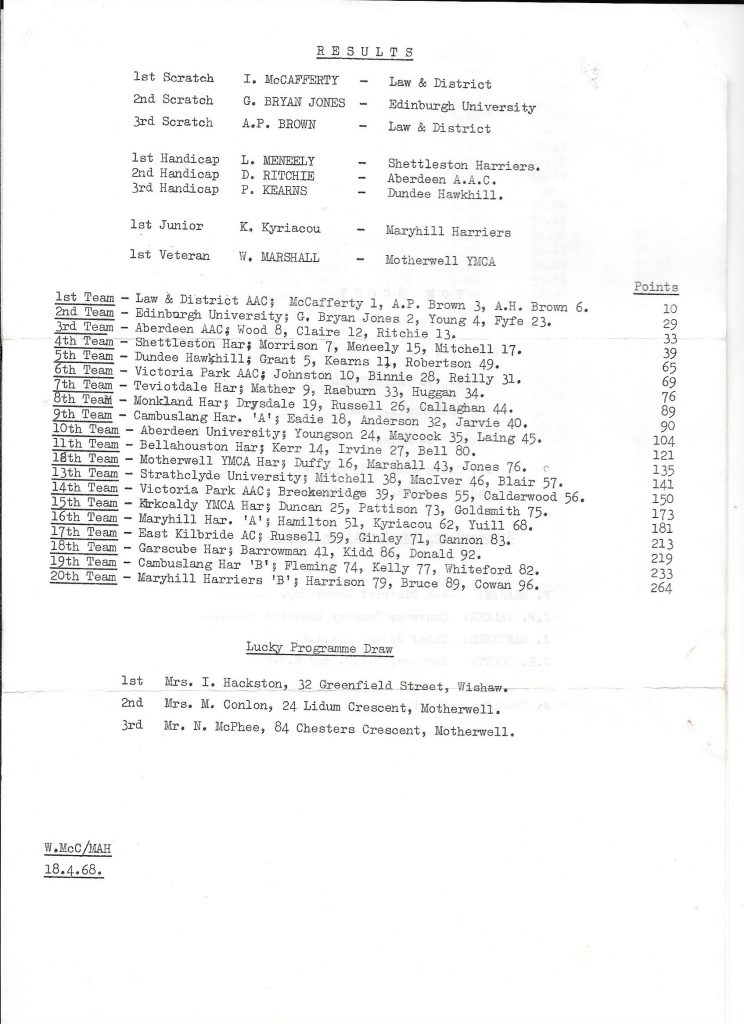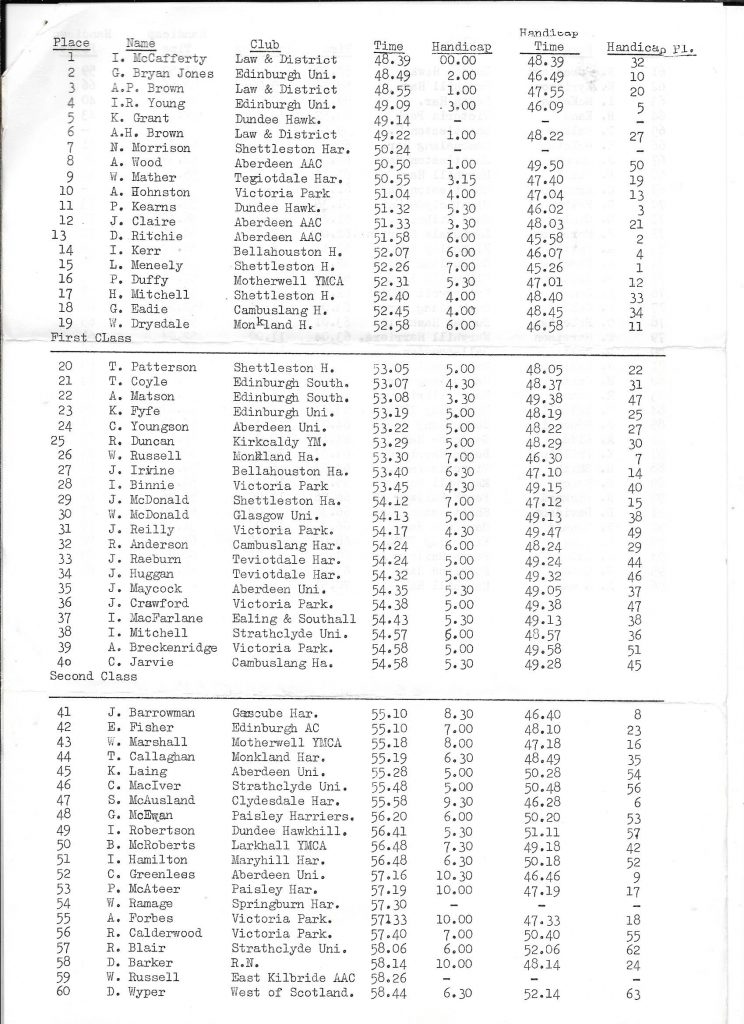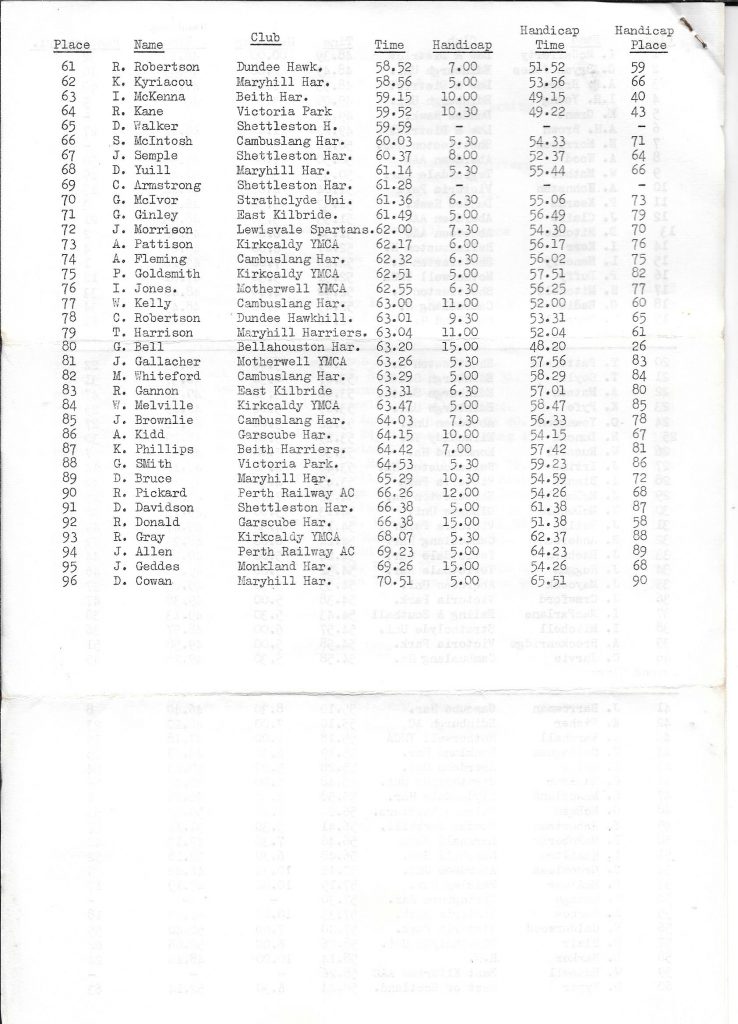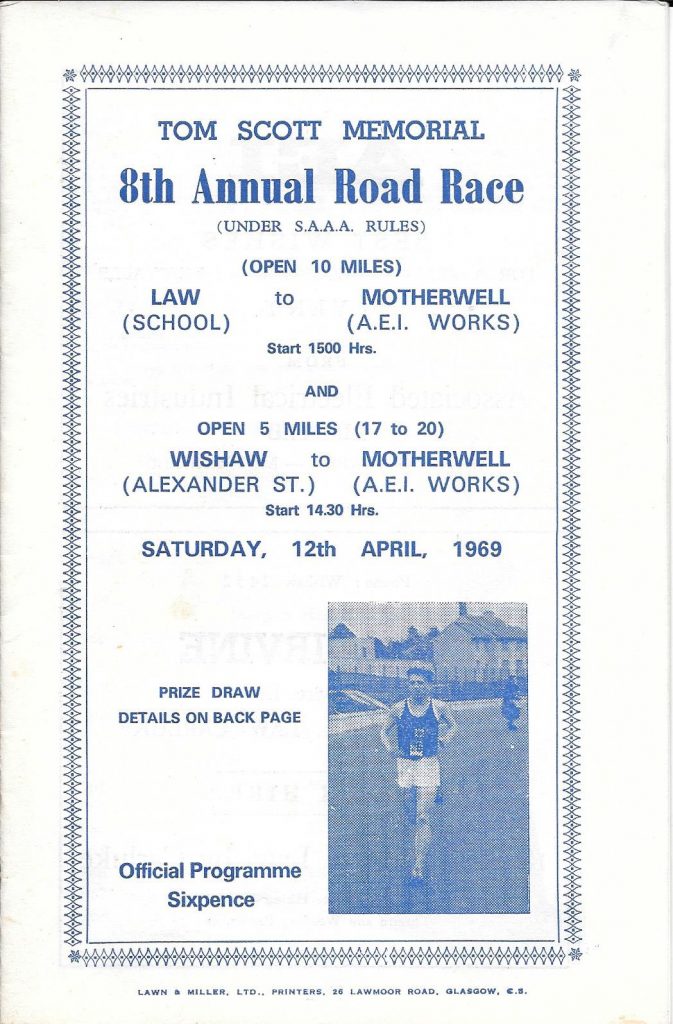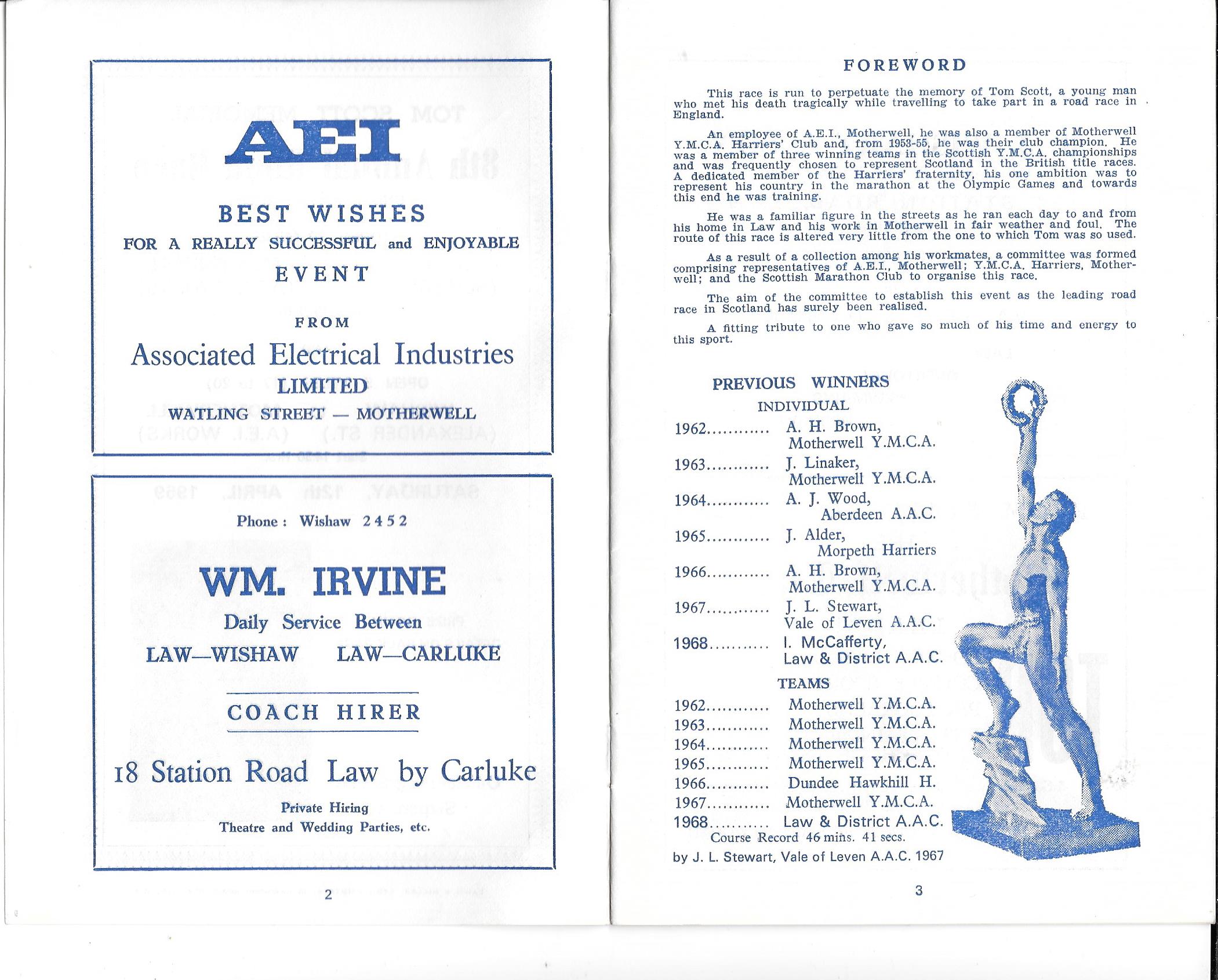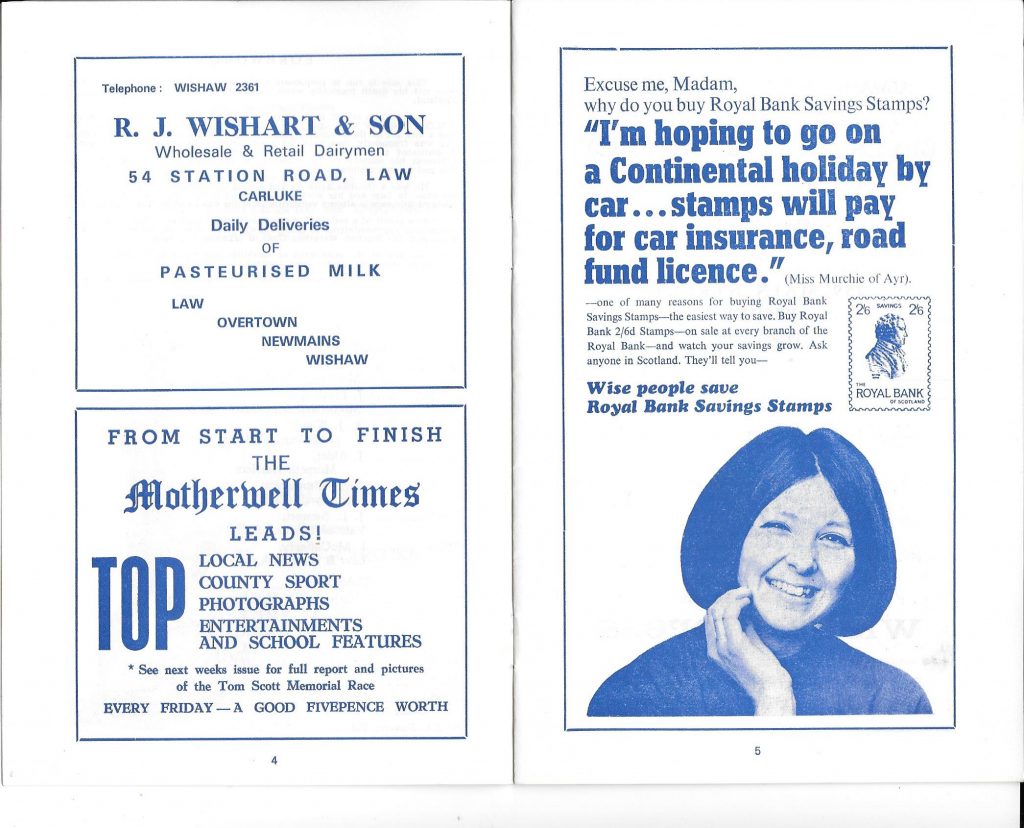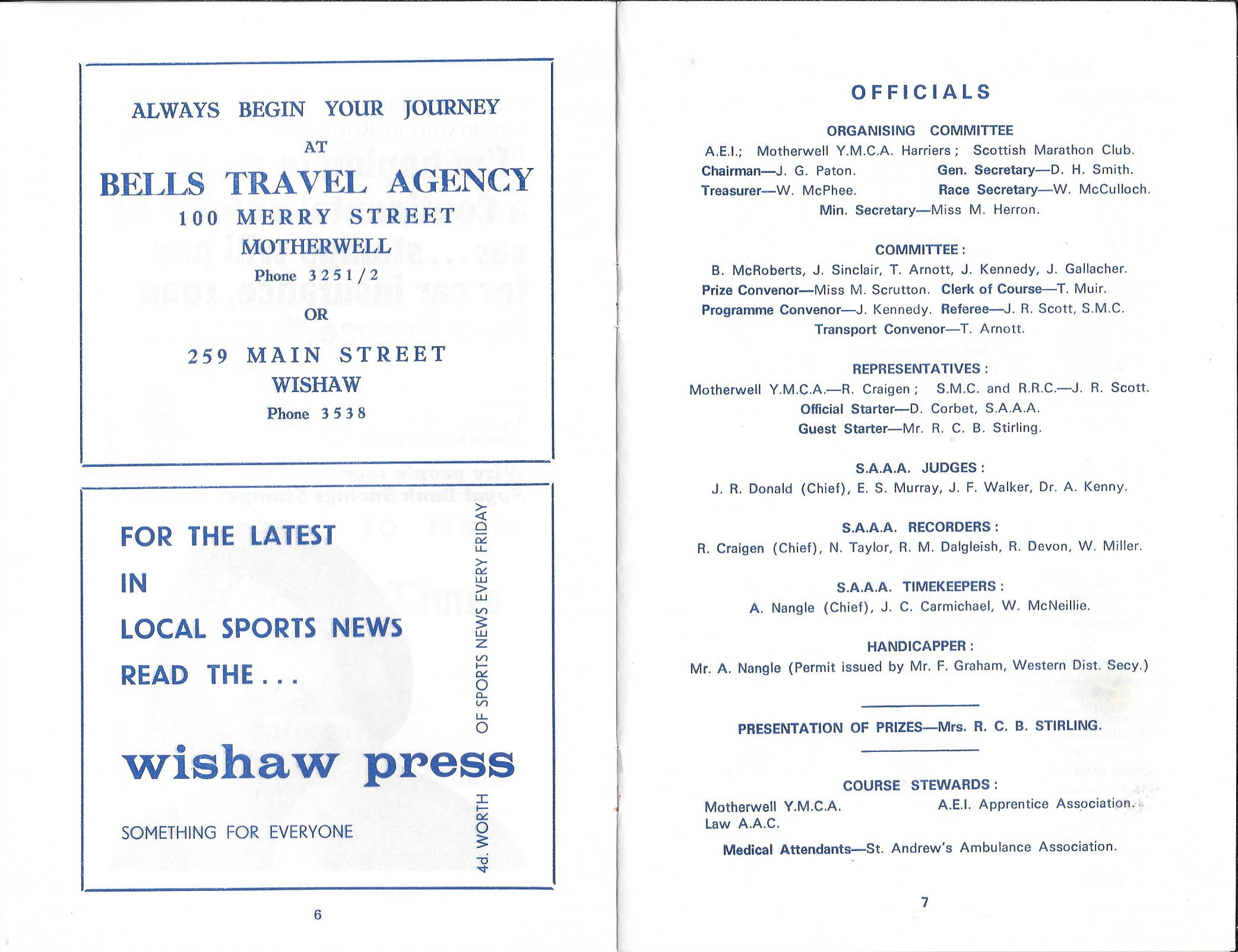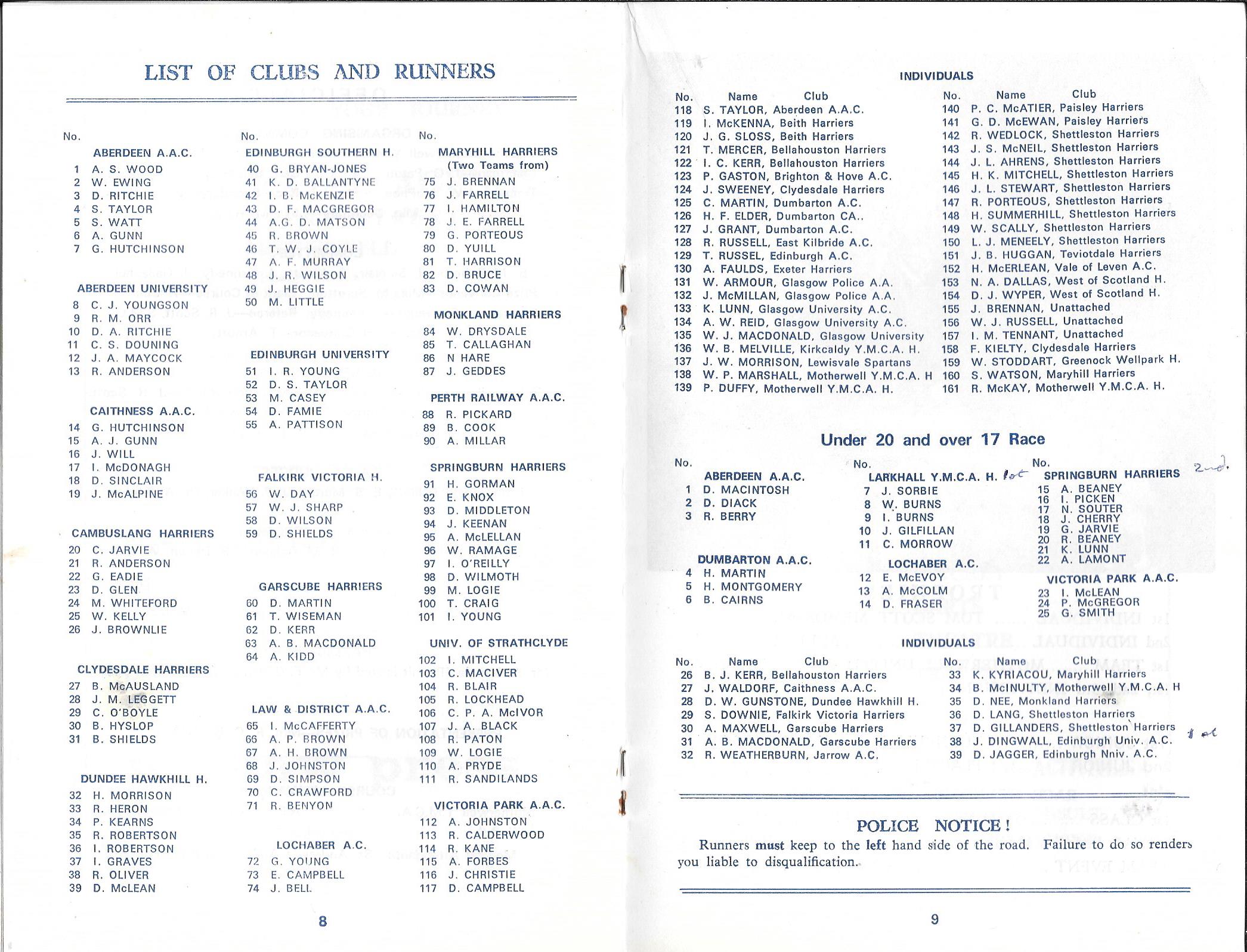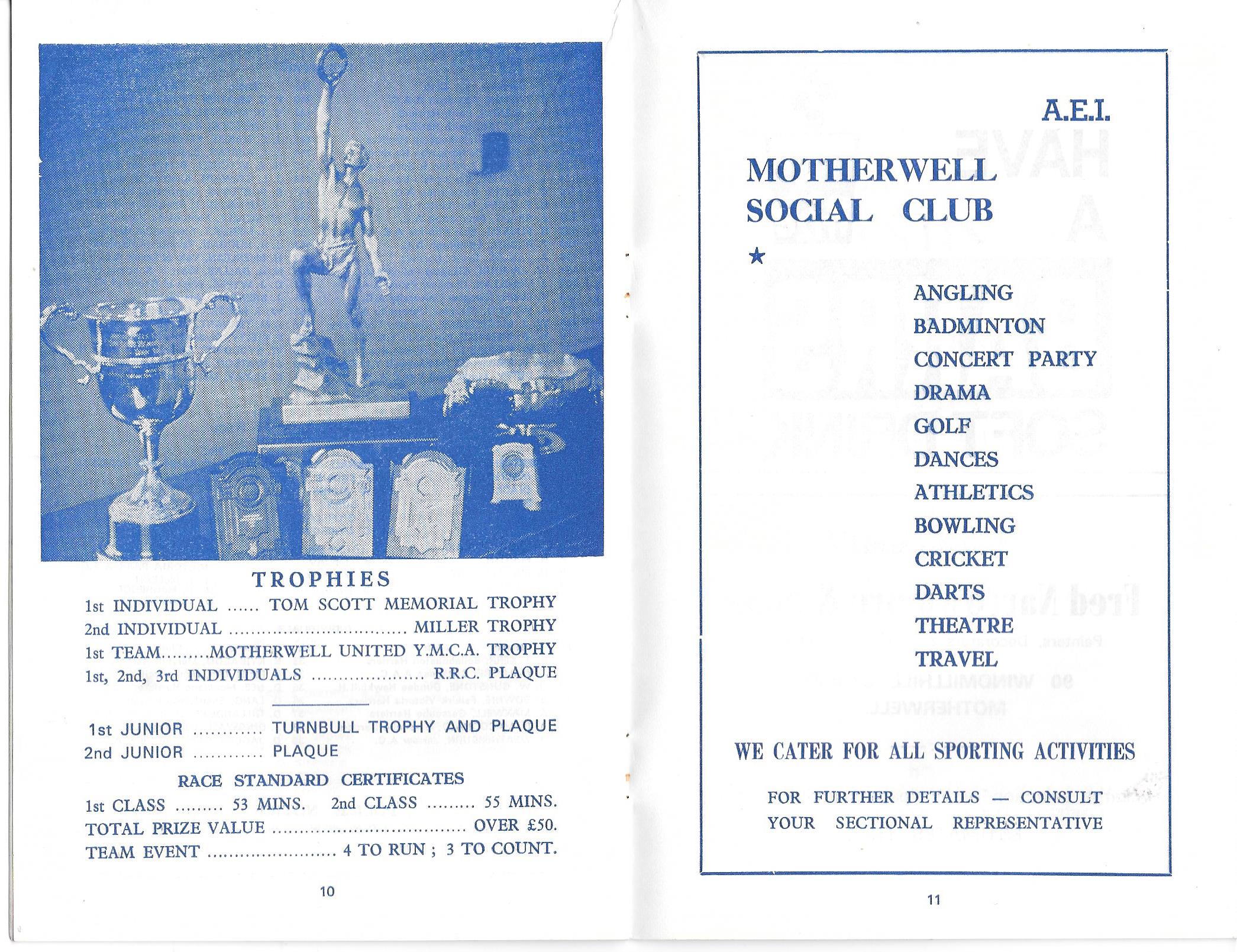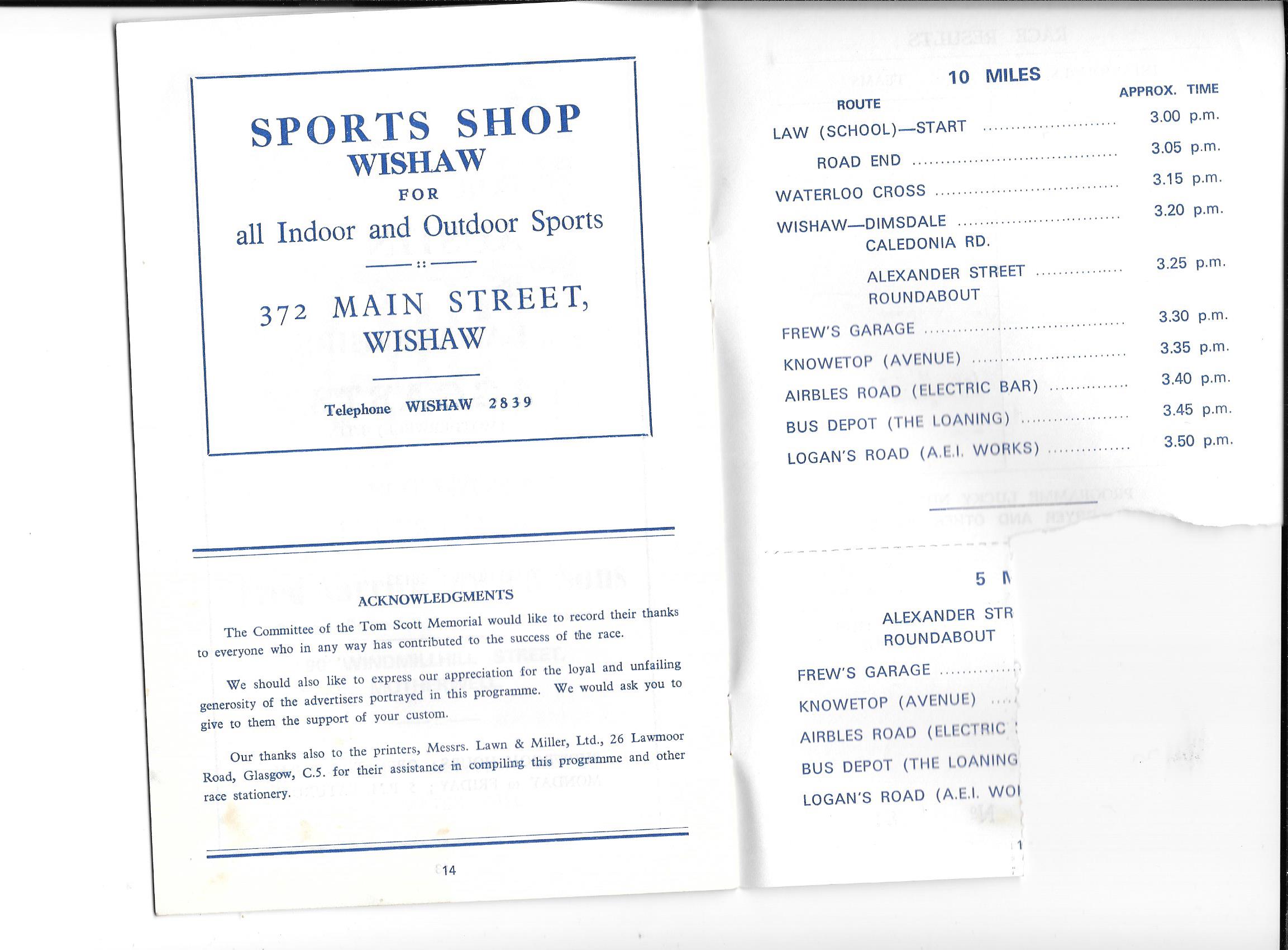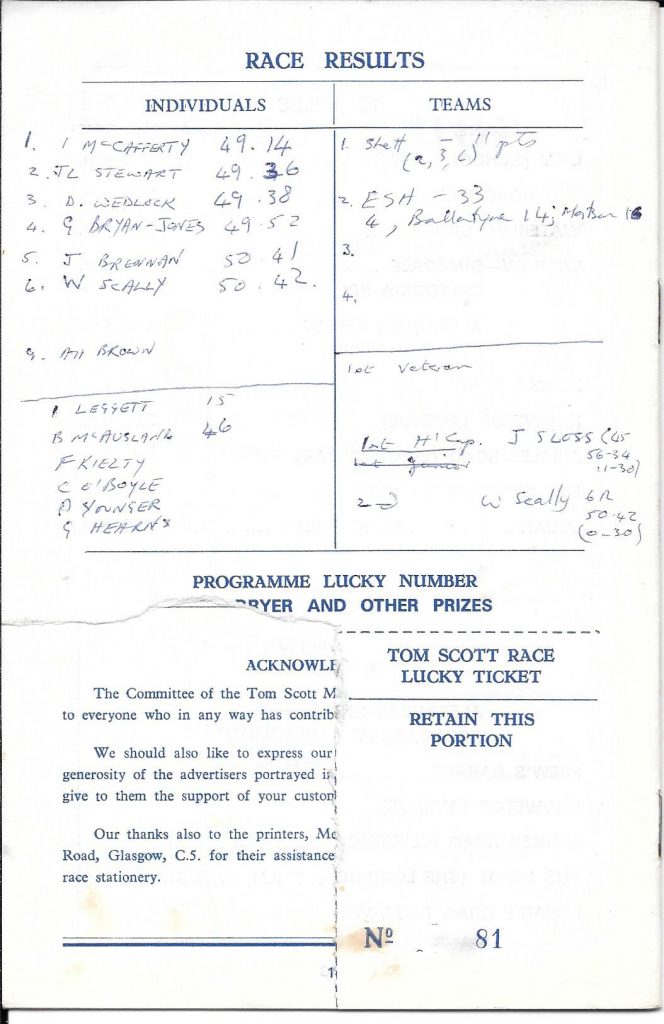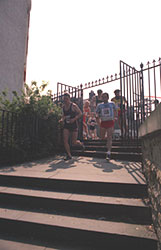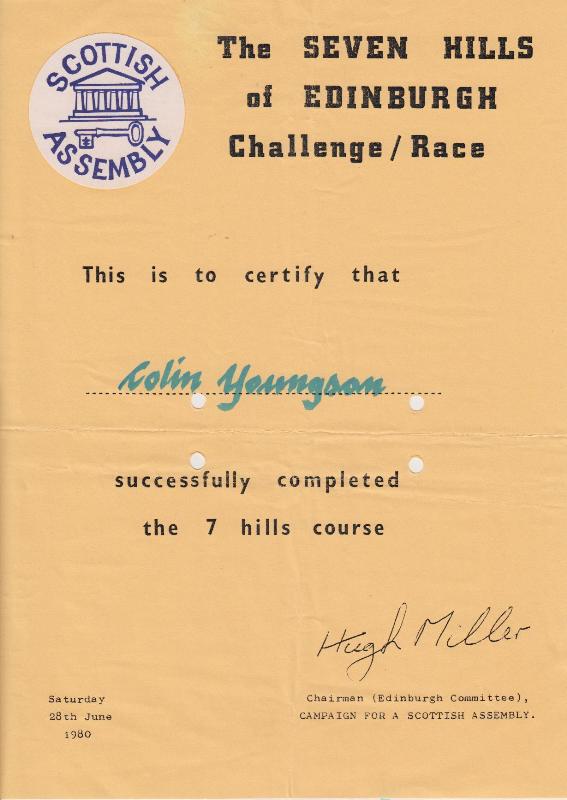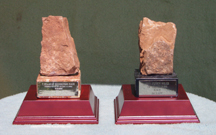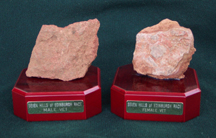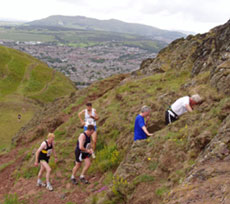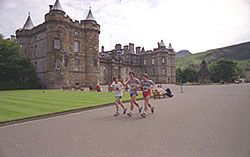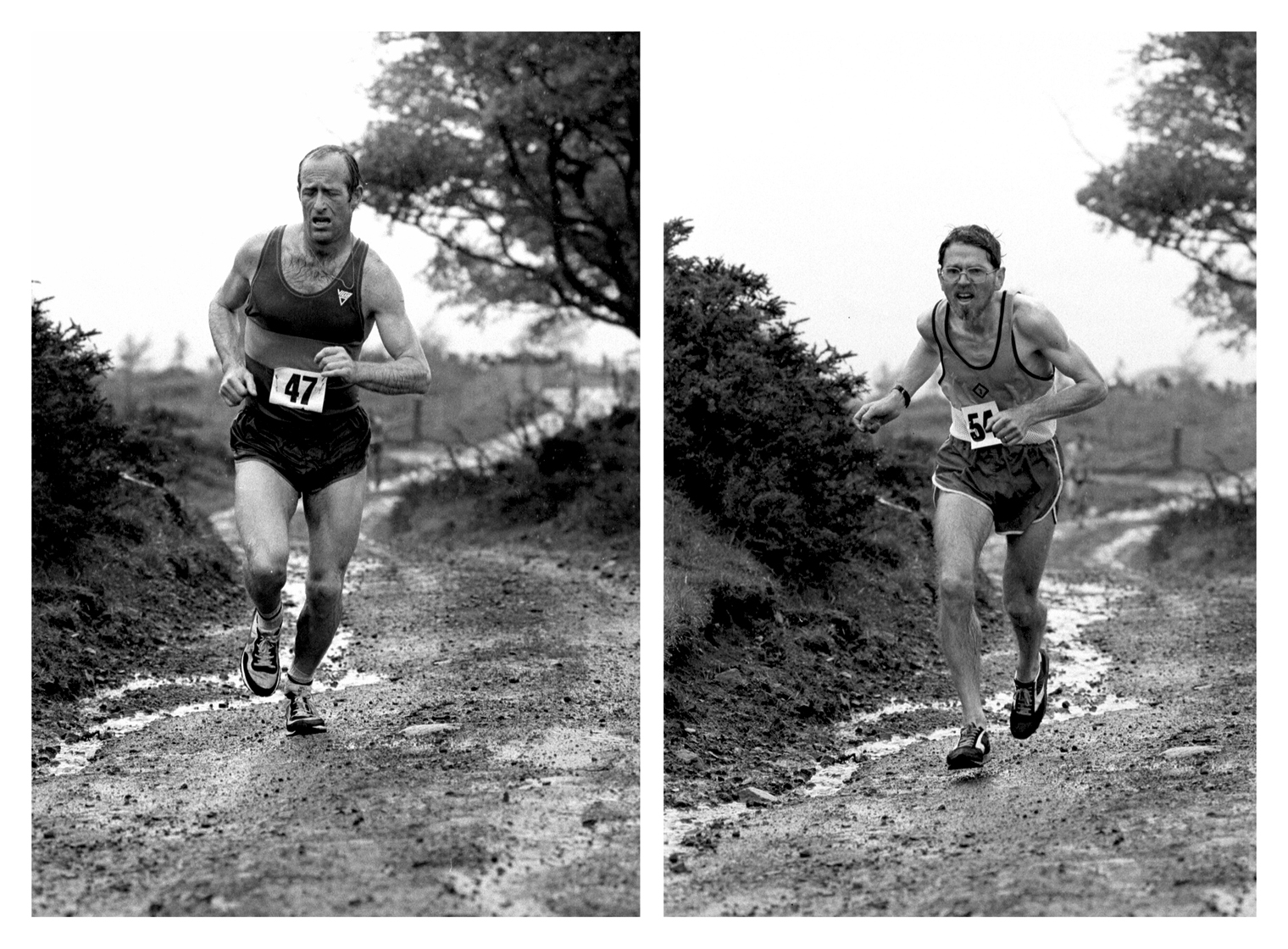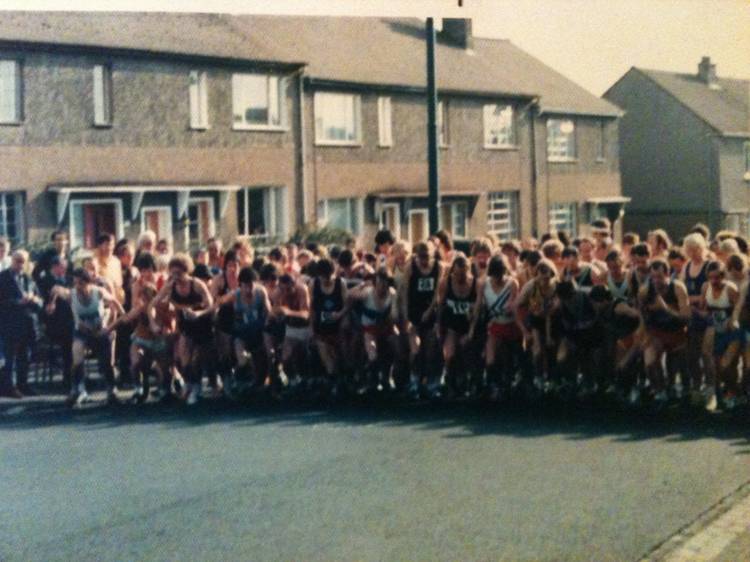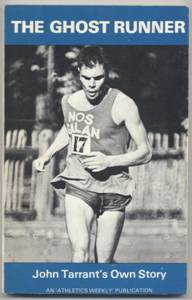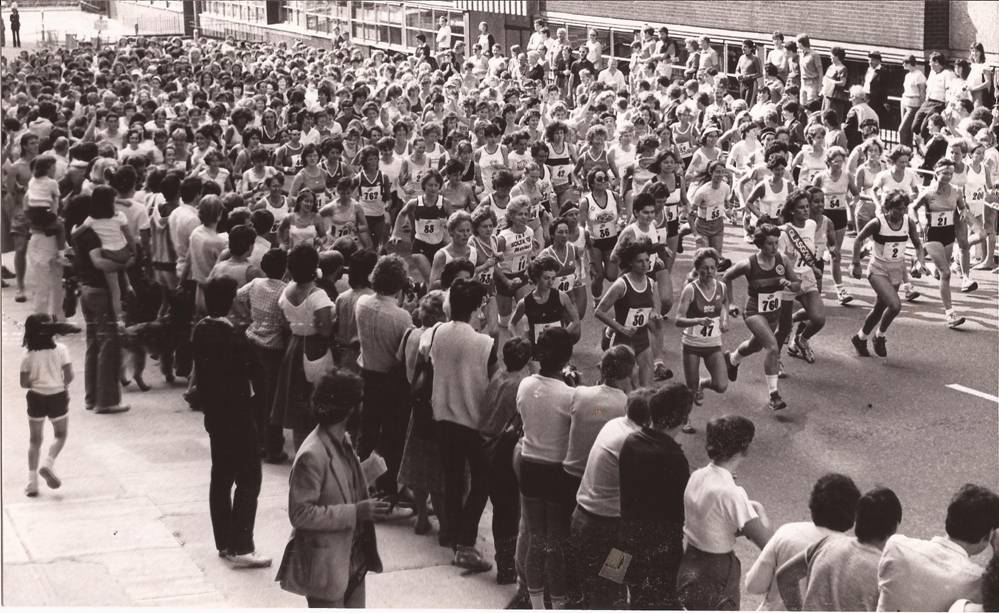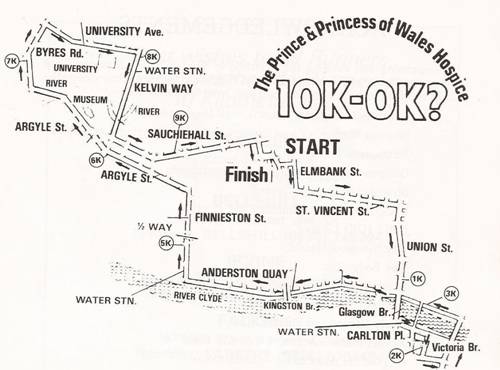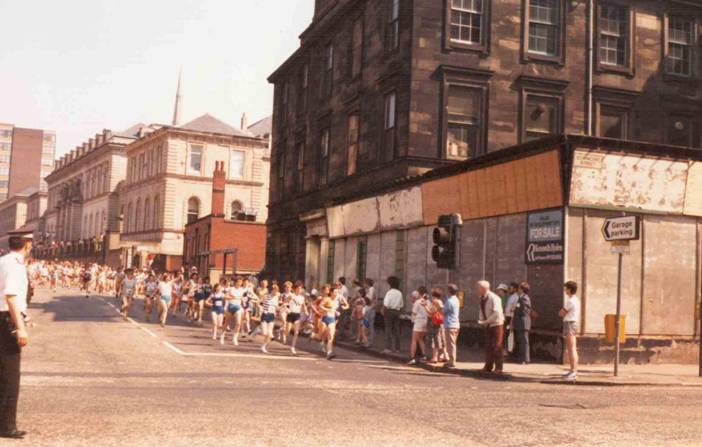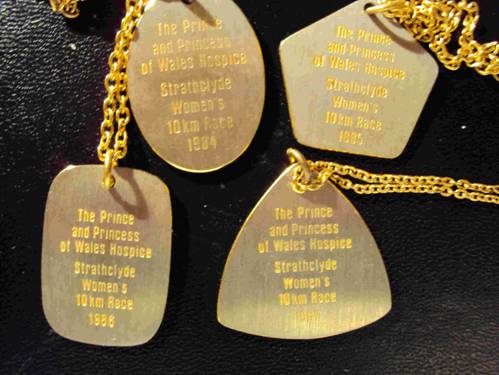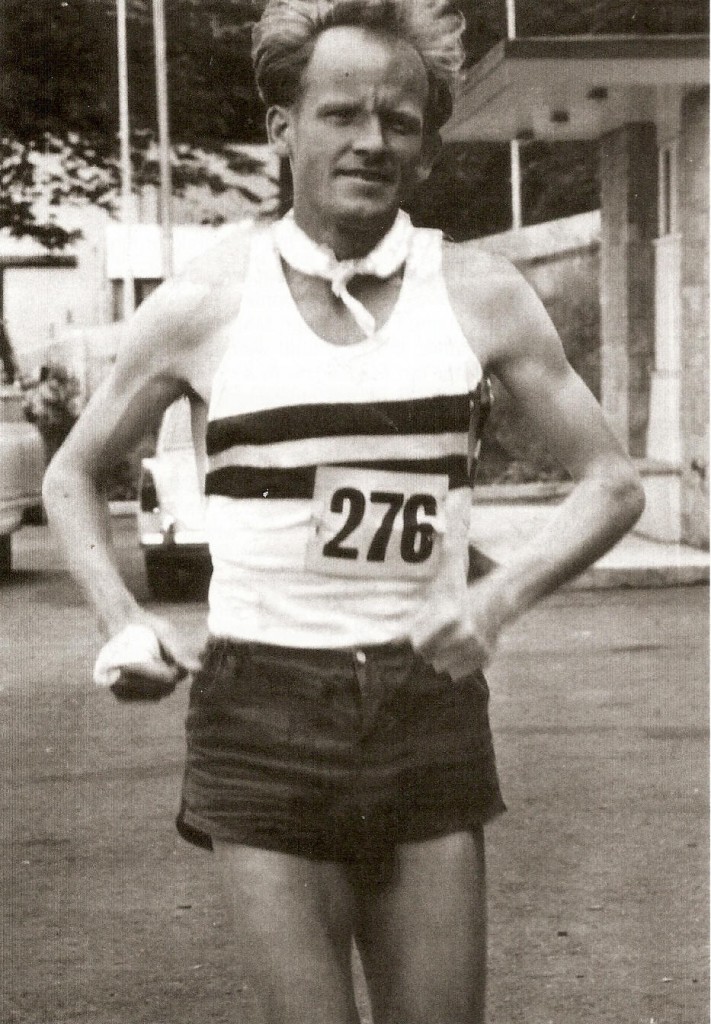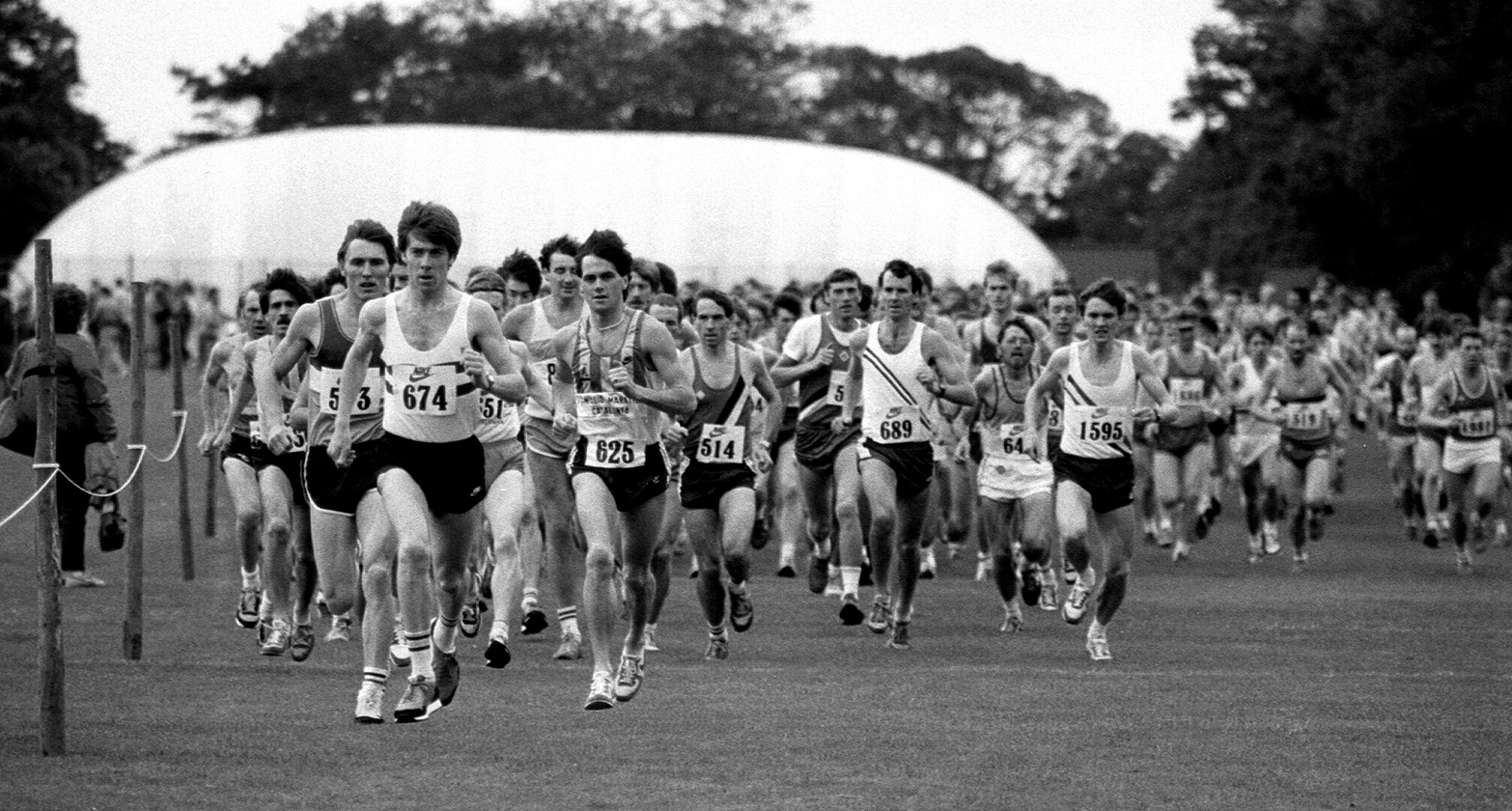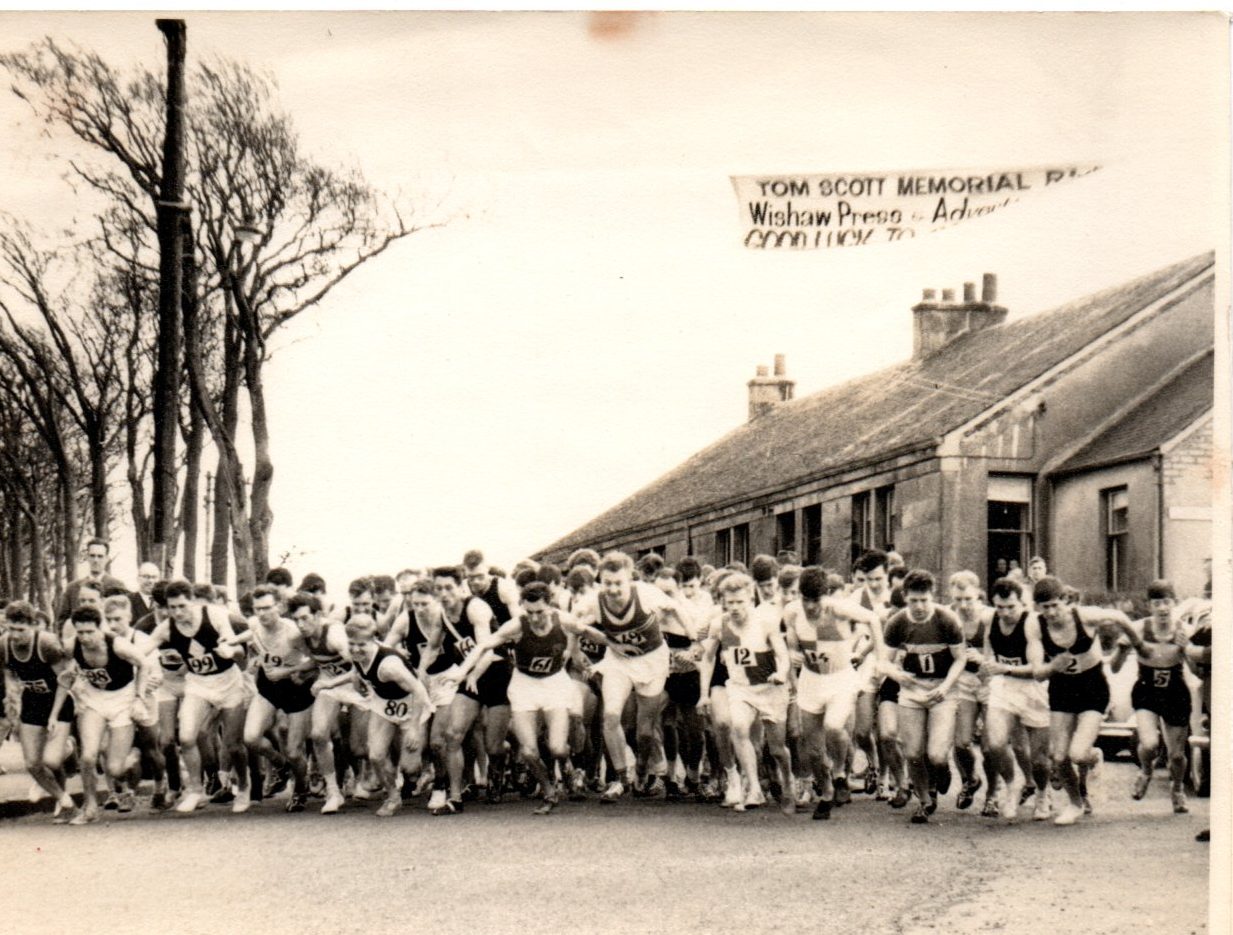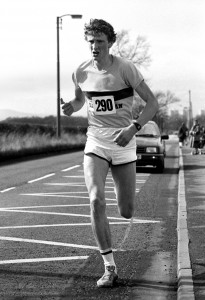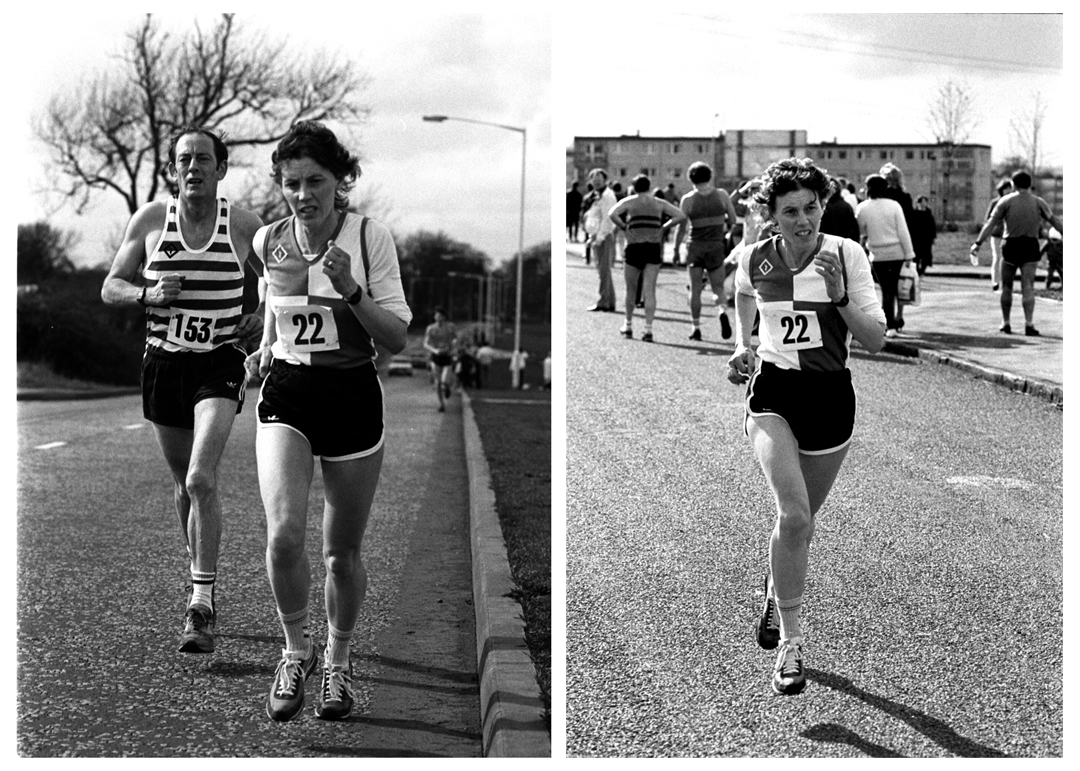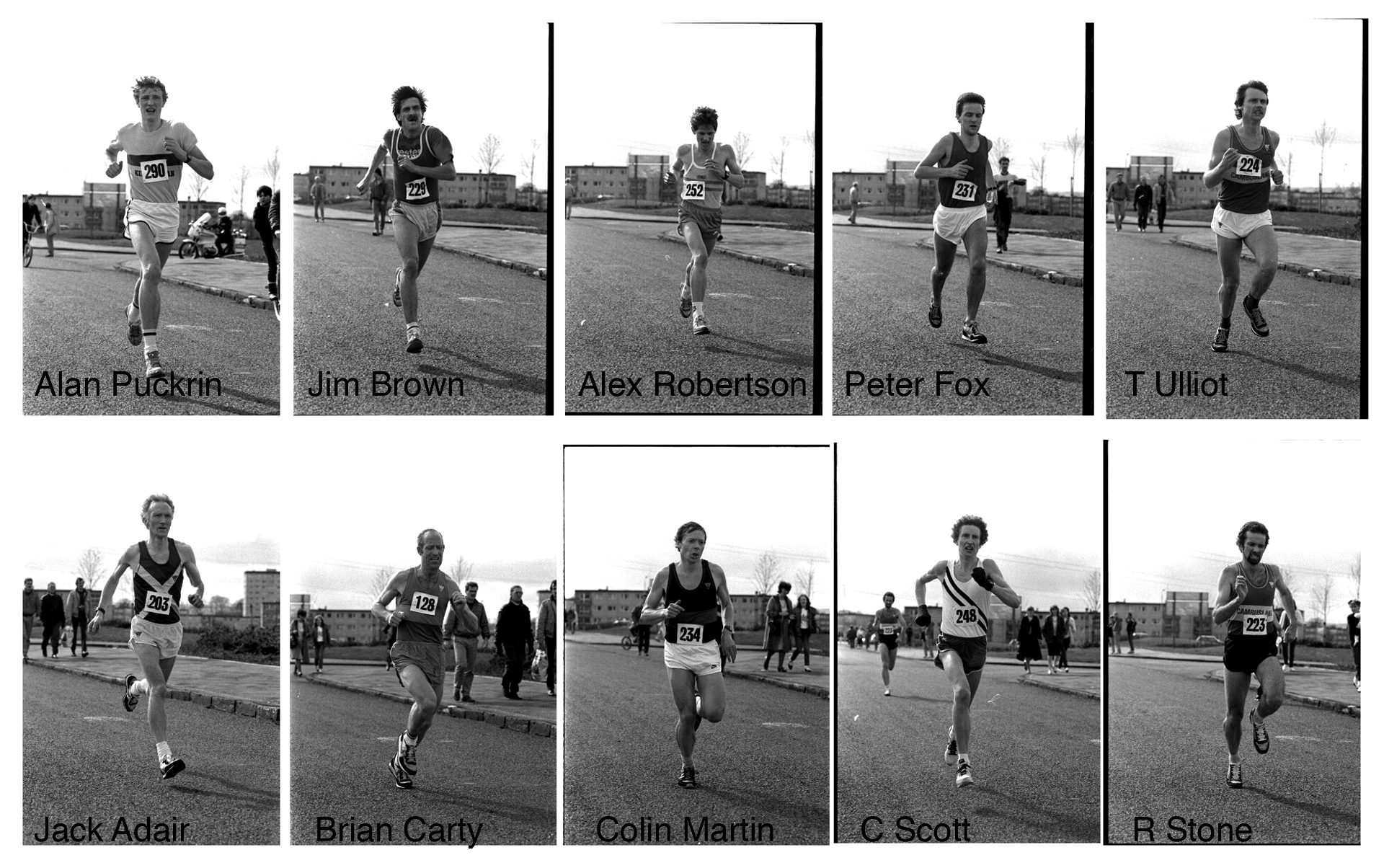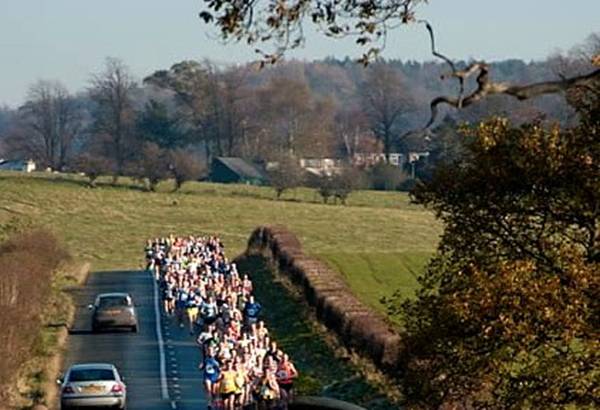Mick McGeogh from South Wales put together the following statistical information about the Tom Scot Road Race from its inception in 1962 right up to the present (2015) It includes comprehensive results, most wins for men and for women, and every sub 50 minute clocking. It is also on the ARRS website, address on the document.
Tom Scott Memorial 10 Mile Road Race
Law to Motherwell SCO
Web Site: http://www.scottishdistancerunninghistory.scot/tom-scott-10-miles
Race Winners (53 runnings)
| 05 Apr 2015 |
49:22 |
Craig Ruddy (SCO) |
56:48 |
Megan Crawford (SCO) |
| 13 Apr 2014 |
53:21 |
Robert Gilroy (SCO) |
62:43 |
Lisa Finlay (SCO) |
| 07 Apr 2013 |
50:25 |
Robbie Simpson (SCO) |
58:08 |
Fiona Matheson (SCO) – 2 |
| 08 Apr 2012 |
49:55 |
Tewoldeberhan Mengisteab (ERI) |
57:45 |
Gemma Rankin (SCO) – 2 |
| 10 Apr 2011 |
50:08 |
Tsegai Twelde (ERI) |
60:08 |
Gemma Rankin (SCO) |
| 11 Apr 2010 |
48:36 |
Tsegezab Woldemichael (ERI) – 3 |
59:24 |
Fiona Matheson (SCO) |
| 12 Apr 2009 |
49:24 |
Tsegezab Woldemichael (ERI) – 2 |
57:15 |
Toni McIntosh (SCO) – 2 |
| 13 Apr 2008 |
50:20 |
Tsegezab Woldemichael (ERI) |
63:28 |
Michelle Hetherington (SCO) |
| 08 Apr 2007 |
51:46 |
David Millar (SCO) |
59:10 |
Annabel Granger (ENG) |
| 25 Mar 2006 |
51:29 |
Glen Stewart (SCO) – 2 |
65:02 |
Claire Couper (SCO) |
| 03 Apr 2005 |
49:24 |
Glen Stewart (SCO) |
60:39 |
Toni McIntosh (SCO) |
| 12 Apr 2004 |
52:12 |
Ben Hukins (SCO) |
59:11 |
Jill Shannon (IRE) |
| 06 Apr 2003 |
48:25 |
Stephen Wylie (SCO) – 2 |
56:11 |
Trudi Thomson (SCO) – 2 |
| 07 Apr 2002 |
49:46 |
Jamie Reid (SCO) – 2 |
58:16 |
Trudi Thomson (SCO) |
| 07 Apr 2001 |
50:24 |
Jamie Reid (SCO) |
59:25 |
Addy Gerrard (SCO) |
| 09 Apr 2000 |
48:28 |
Allan Adams (SCO) – 2 |
56:16 |
Sandra Branney (SCO) – 3 |
| 10 Apr 1999 |
49:18 |
Tommy Murray (SCO) – 3 |
59:23 |
Marlene Gemmell (SCO) |
| 05 Apr 1998 |
48:38 |
Tommy Murray (SCO) – 2 |
57:27 |
Tracey Brindley (SCO) |
| 13 Apr 1997 |
49:35 |
Billy Coyle (SCO) |
53:56 |
Yvonne Murray (SCO) – 2 |
| 14 Apr 1996 |
47:54 |
Allan Adams (SCO) |
63:16 |
Kim Fisher (SCO) |
| 09 Apr 1995 |
47:35 |
Adrian Callan (SCO) |
53:57 |
Vicki McPherson (SCO) |
| 10 Apr 1994 |
48:15 |
Tommy Murray (SCO) |
58:16 |
Elaine McBrinn (SCO) |
| 11 Apr 1993 |
47:29 |
Stephen Wylie (SCO) |
53:42 |
Karen MacLeod (SCO) |
| 05 Apr 1992 |
48:05 |
Mike Carroll (SCO) |
56:12 |
Sandra Branney (SCO) – 2 |
| 06 Apr 1991 |
47:31 |
Nat Muir (SCO) |
54:05 |
Sandra Branney (SCO) |
| 07 Apr 1990 |
47:20 |
George Braidwood (SCO) |
57:54 |
Penny Rother (SCO) |
| 1989 |
|
Race not held (no race sponsorship) |
|
|
| 09 Apr 1988 |
47:38 |
Alex Gilmour (SCO) |
54:30 |
Sharon Sinclair (SCO) – 3 |
| 04 Apr 1987 |
47:38 |
Lawrie Spence (SCO) – 2 |
54:50 |
Sharon Sinclair (SCO) – 2 |
| 05 Apr 1986 |
47:09 |
Lawrie Spence (SCO) |
55:30 |
Sharon Sinclair (SCO) |
| 13 Apr 1985 |
49:24 |
Alan Puckrin (SCO) |
66:42 |
Palm Gunstone (SCO) |
| 07 Apr 1984 |
47:09 |
John Graham (SCO) |
54:49 |
Yvonne Murray (SCO) |
| 09 Apr 1983 |
49:12 |
Lindsay Robertson (SCO) |
|
|
| 03 Apr 1982 |
46:05 |
Allister Hutton (SCO) |
|
|
| 04 Apr 1981 |
47:39 |
Yasunori Hamada (JAP) |
|
|
| 12 Apr 1980 |
46:34 |
Jim Brown (SCO) – 3 |
|
|
| 07 Apr 1979 |
48:04 |
Jim Brown (SCO) – 2 |
|
|
| 01 Apr 1978 |
46:39 |
Jim Dingwall (SCO) – 4 |
|
|
| 02 Apr 1977 |
49:40 |
Jim Dingwall (SCO) – 3 |
|
|
| 03 Apr 1976 |
47:10 |
Andy McKean (SCO) – 2 |
|
|
| 05 Apr 1975 |
46:33 |
Jim Brown (SCO) |
|
|
| 06 Apr 1974 |
48:45 |
Jim Dingwall (SCO) – 2 |
|
|
| 07 Apr 1973 |
48:08 |
Jim Dingwall (SCO) |
|
|
| 08 Apr 1972 |
47:45 |
Sam Downie (SCO) |
|
|
| 03 Apr 1971 |
47:36 |
Andy McKean (SCO) |
|
|
| 04 Apr 1970 |
47:47 |
Lachie Stewart (SCO) -2 |
|
|
| 05 Apr 1969 |
49:14 |
Ian McCafferty (SCO) -2 |
|
|
| 06 Apr 1968 |
48:39 |
Ian McCafferty (SCO) |
|
|
| 01 Apr 1967 |
46:51 |
Lachie Stewart (SCO) |
|
|
| 02 Apr 1966 |
48:06 |
Andy Brown (SCO) – 2 |
|
|
| 03 Apr 1965 |
47:34 |
Jim Alder (SCO) |
|
|
| 04 Apr 1964 |
49:27 |
Alastair Wood (SCO) |
|
|
| 20 Apr 1963 |
47:59 |
John Linaker (SCO) |
|
|
| 07 Apr 1962 |
50:33 |
Andy Brown (SCO) |
|
|
Most Wins (1962-date)
Men
| 4 |
Jim Dingwall |
1973-4, 1977-8 |
Ladies
| 3 |
Sharon Sinclair
Sandra Branney |
1986-88
1991-2, 2000 |
History: Tom Scott was a dedicated member of Motherwell YMCA Harriers throughout the 1950s until his tragic death in a road accident whilst travelling to a race in England in 1960. He had been club cross country champion in 1953/54 and 1954/55 and was a Scottish YMCA international from 1953 to 1959. Tom’s regular training run between his home in Law and his work place in Motherwell became the original route used for the race. The first race was held in 1962, organised by John Kerr the 1961 Scottish AAA Marathon Champion who had been one of Tom Scott’s regular training partners.
Tom Scott Memorial 10 Miles
05 April 2015 Men (inc Scottish Champs)
1 49:22 Craig Ruddy (SCO) 10 Apr 1988
2 49:26 Tewoldeberhan Mengisteab (ERI) 1986
3 49:37 Michael Crawley (SCO) 20 Nov 1987
Ladies (inc Scottish Champs)
1 56:48 Megan Crawford (SCO) 17 Apr 1989
2 58:07 Gemma Rankin (SCO) 18 Dec 1984
13 April 2014 Men (inc Scottish Champs)
1 53:21 Robert Gilroy (SCO) 30 Apr 1976
Ladies (inc Scottish Champs)
1 62:43 Lisa Finlay (SCO) 13 Jul 1969
07 April 2013 Men (inc Scottish Champs)
1 50:25 Robbie Simpson (SCO) 14 Nov 1991
25 1:00:02 Francis Hurley (SCO) 17 Sep 1952
28 1:01:45 Andrew McLinden (SCO) 02 Apr 1951
66 1:09:01 Robin Scott (SCO) 04 Apr 1944
71 1:10:00 Peter Cartwright (SCO) 11 Oct 1942
86 1:12:18 Ian Donnelly (SCO) 21 Mar 1946
1361:23:51 Ian Leggett (SCO) 26 Apr 1939
Ladies (inc Scottish Champs)
1 58:08 Fiona Matheson (SCO) 25 Apr 1961
2 58:20 Joasia Zakrzewski (SCO) 19 Jan 1976
3 58:26 Jennifer Wetton (Emsley) (SCO) 28 Nov 1986
08 April 2012 Men (inc Scottish Champs)
1 49:55 Tewoldeberhan Mengisteab (ERI) 1986
2 50:08 Ross Houston (SCO) 05 Dec 1979
3 50:17 Andrew Douglas (SCO) 19 Dec 1986
89 1:11:02 Peter Cartwright (SCO) 11 Oct 1942
1441:22:11 Ian Leggett (SCO) 26 Apr 1939
Ladies (inc Scottish Champs)
1 57:45 Gemma Rankin (SCO) 18 Dec 1984
2 58:54 Jennifer MacLean (SCO) 28 Nov 1973
3 59:43 Fiona Matheson (SCO) 25 Apr 1961
4 1:00:47 Morgan Windram (PA/USA) 1981
8 1:03:47 Kim Spence (SCO) 30 Sep 1977
35 1:15:40 Kate Todd (SCO) 21 Jul 1950
40 1:26:26 Betty Gilchrist (SCO) 20 Sep 1944
10 April 2011 Men (inc Scottish Champs)
1 50:08 Tsegai Twelde (ERI) 08 Dec 1989
1 50:13 Teweldeberhan Mengisteab (ERI) 1986
2 50:31 Ross Houston (SCO) 05 Dec 1979
Ladies (inc Scottish Champs)
1 60:08 Gemma Rankin (SCO) 18 Dec 1984
2 62:13 Megan Crawford (SCO) 17 Apr 1989
11 April 2010 Men
1 48:36 Tsegezab Woldemichael (ERI) 20 Feb 1983
2 48:53 Neil Renault (SCO) 30 Jul 1983
3 50:53 Teweldeberhan Mengisteab (ERI) 1986
Ladies
1 59:24 Fiona Matheson (SCO) 25 Apr 1961
12 April 2009 Men
1 49:24 Tsegezab Woldemichael (ERI) 20 Feb 1983
2 49:50 Teweldeberhan Mengisteab (ERI) 1986
Ladies
1 57:15 Toni McIntosh (SCO) 26 Nov 1979
2 58:58 Alison McDonald (SCO) 12 Jun 1979
13 April 2008 Men
1 50:20 Tsegezab Woldemichael (ERI) 20 Feb 1983
2 50:48 Paul Arcari (SCO) 10 Oct 1982
Tom Scott Memorial 10 Miles
13 April 2008 Ladies
1 63:28 Michelle Hetherington (SCO) 16 May 1964
08 April 2007 Men
1 51:46 David Millar (SCO) 09 Jul 1969
2 52:28 Robert Gilroy (SCO) 30 Apr 1976
Ladies
1 59:10 Annabel Granger (ENG) 19 May 1973
2 59:40 Elke Prasad (SCO/GER)
25 March 2006 Men
1 51:29 Glen Stewart (SCO) 07 Dec 1970
Ladies
1 65:02 Claire Couper (SCO) 12 Mar 1975
03 April 2005 Men
1 49:24 Glen Stewart (SCO) 07 Dec 1970
2 51:05 AC Muir (SCO) 20 Jun 1973
3 54:41 Robert Gilroy (SCO) 30 Apr 1976
Ladies
1 60:39 Toni McIntosh (SCO) 26 Nov 1979
12 April 2004 Men
1 52:12 Ben Hukins (SCO) 16 Jul 1978
Ladies
1 59:11 Jill Shannon (IRE) 1985
06 April 2003 Men
1 48:25 Stephen Wylie (SCO) 12 Nov 1971
2 48:51 Jamie Reid (SCO) 06 Jul 1973
3 48:52 Allan Adams (SCO) 11 Sep 1972
Ladies
1 56:11 Trudi Thomson (SCO) 18 Nov 1959
2 59:09 Elaine McBrinn (SCO) 19 Dec 1963
07 April 2002 Men
1 49:46 Jamie Reid (SCO) 06 Jul 1973
2 50:13 Tommy Murray (SCO) 18 May 1961
Ladies
1 58:16 Trudi Thomson (SCO) 18 Nov 1959
2 59:08 Toni McIntosh (SCO) 26 Nov 1979
3 59:24 Elaine McBrinn (SCO) 19 Dec 1963
4 59:33 Lindsay Cunningham (SCO) 02 Dec 1971
07 April 2001 Men
1 50:24 Jamie Reid (SCO) 06 Jul 1973
Ladies
1 59:25 Addy Gerrard (SCO) 24 Nov 1959
09 April 2000 Men
1 48:28 Allan Adams (SCO) 11 Sep 1972
2 48:47 Tommy Murray (SCO) 18 May 1961
3 49:12 Billy Coyle (SCO) 03 Oct 1962
4 49:27 Alex Robertson (SCO) 06 May 1963
Ladies
1 56:16 Sandra Branney (SCO) 30 Apr 1954
2 56:47 Marlene Gemmell (SCO) 21 Jun 1972
3 57:52 Claire Couper (SCO) 12 Mar 1975
0 April 1999 Men
1 49:18 Tommy Murray (SCO) 18 May 1961
2 49:49 Allan Adams (SCO) 11 Sep 1972
Ladies
1 59:23 Marlene Gemmell (SCO) 21 Jun 1972
05 April 1998 Men
1 48:38 Tommy Murray (SCO) 18 May 1961
Ladies
1 57:27 Tracey Brindley (SCO) 25 Aug 1972
2 58:29 Lindsay Cairns (SCO)
13 April 1997 Men
1 49:35 Billy Coyle (SCO) 03 Oct 1962
2 50:00 Charlie Thompson (SCO) 17 Jun 1965
Ladies
1 53:56 Yvonne Murray (SCO) 04 Oct 1964
14 April 1996 Men
1 47:54 Allan Adams (SCO) 11 Sep 1972
2 51:07 Brian Kirkwood (SCO) 20 Sep 1952
Ladies
1 63:16 Kim Fisher (SCO)
09 April 1995 Men
1 47:35 Adrian Callan (SCO) 28 Nov 1962
2 47:54 Graeme Wight (SCO) 03 Jun 1965
3 48:08 Brian Kirkwood (SCO) 20 Sep 1952
4 48:10 Charlie Thompson (SCO) 17 Jun 1965
5 49:35 Billy Coyle (SCO) 03 Oct 1962
6 49:51 Carl Heaven (SCO) 21 Feb 1971
Ladies
1 53:57 Vicki McPherson (SCO) 01 Jun 1971
2 56:41 Audrey Sym (SCO) 02 Aug 1966
3 57:33 Elaine McBrinn (SCO) 19 Dec 1963
10 April 1994 Men
1 48:15 Tommy Murray (SCO) 18 May 1961
2 48:39 Brian Kirkwood (SCO) 20 Sep 1952
3 49:31 Billy Coyle (SCO) 03 Oct 1962
Ladies
1 58:16 Elaine McBrinn (SCO) 19 Dec 1963
11 April 1993 Men
1 47:29 Stephen Wylie (SCO) 12 Nov 1971
2 47:48 Terry Mitchell (SCO) 23 Aug 1959
3 47:58 Brian Kirkwood (SCO) 20 Sep 1952
4 47:58 David Ross (SCO) 02 Nov 1965
5 48:13 Alan Robson (SCO) 14 Nov 1959
6 49:02 Charlie Thompson (SCO) 17 Jun 1965
7 49:57 Alastair Russell (SCO) 17 Jun 1968
Ladies
1 53:42 Karen MacLeod (SCO) 24 Apr 1958
2 55:38 Anne Buckley (ENG) 20 Jun 1967
3 57:12 Janet McColl (SCO) 02 Jul 1956
4 58:25 Janette Stevenson (SCO) 03 May 1949
05 April 1992 Men
1 48:05 Mike Carroll (SCO) 28 Jun 1958
2 48:54 Charlie Thompson (SCO) 17 Jun 1965
3 49:04 Brian Kirkwood (SCO) 20 Sep 1952
4 49:17 Alastair Russell (SCO) 17 Jun 1968
Ladies
1 56:12 Sandra Branney (SCO) 30 Apr 1954
2 58:24 Vicki Vaughan (SCO) 25 Oct 1968
06 April 1991 Men
1 47:31 Nat Muir (SCO) 12 Mar 1958
2 47:55 Eddie Stewart (SCO) 15 Dec 1956
3 47:56 Alastair Walker (SCO) 25 May 1956
4 48:10 Bill Nelson (SCO) 18 Feb 1957
5 48:44 Alastair Douglas (SCO) 10 Dec 1960
6 48:55 Kenneth Rankin (SCO) 11 Dec 1956
7 48:59 Charlie Thompson (SCO) 17 Jun 1965
8 49:19 Frank Harper (SCO) 25 Jun 1957
9 49:22 Craig Ross (SCO) 26 Jun 1955
10 49:37 Jim Orr (SCO) 10 Jan 1965
11 49:41 Euan Wilkinson (SCO)
12 49:46 Jim Evans (SCO) 21 Dec 1953
13 49:58 T Thomson (SCO)
Ladies
1 54:05 Sandra Branney (SCO) 30 Apr 1954
2 56:21 Eileen Masson (SCO) 11 Mar 1958
07 April 1990 Men
1 47:20 George Braidwood (SCO) 03 Dec 1959
2 47:30 Fraser Clyne (SCO) 23 Aug 1955
3 47:42 Peter Fox (SCO) 22 Mar 1962
4 47:43 Charlie Thompson (SCO) 17 Jun 1965
5 48:04 Peter Faulds (SCO) 06 Jun 1962
6 48:24 Bill Nelson (SCO) 18 Feb 1957
7 48:48 Alex Gilmour (SCO) 21 Dec 1954
8 48:56 A McKoy (SCO)
9 48:56 Eddie Stewart (SCO) 15 Dec 1956
10 49:08 Ken Mortimer (SCO) 10 Aug 1960
11 49:18 Douglas Frame (SCO) 22 Sep 1955
12 49:29 Dermot McGonigle (SCO) 12 Feb 1962
13 49:31 Colin Youngson (SCO) 27 Oct 1947
14 49:33 Kenneth Rankin (SCO) 11 Dec 1956
Ladies
1 57:54 Penny Rother (SCO) 15 Feb 1958
2 58:40 J Donnolly (SCO)
3 61:07 H Morton (SCO)
1989 – NO RACE (WITHDRAWAL OF SPONSORSHIP
Tom Scott Memorial 10 Miles
09 April 1988 Men
1 47:48 Alex Gilmour (SCO) 21 Dec 1954
2 47:39 Peter Fox (SCO) 22 Mar 1962
3 48:58 Douglas Frame (SCO) 22 Sep 1955
4 49:36 Andy Daly (SCO) 21 Apr 1960
5 49:52 Frank Harper (SCO) 25 Jun 1957
Ladies
1 54:30 Sharon Sinclair (SCO)
2 56:49 Eileen Masson (SCO) 11 Mar 1958
3 58:30 J Donnolly (SCO)
4 59:50 C Brown (SCO)
Tom Scott Memorial 10 Miles
04 April 1987 Men
1 47:38 Lawrie Spence (SCO) 16 Jul 1953
2 47:49 Douglas Frame (SCO) 22 Sep 1955
3 48:17 P Conaghan (SCO)
4 48:24 Andy Daly (SCO) 21 Apr 1960
5 48:46 Steven Marshall (SCO) 15 Oct 1965
6 49:09 Charlie Thompson (SCO) 17 Jun 1965
7 49:10 Steve Conaghan (SCO) 18 May 1967
8 49:30 John Ross (SCO) 18 Sep 1961
Ladies
1 54:50 Sharon Sinclair (SCO)
2 59:46 Rose McAleese (SCO)
330 ran.
05 April 1986 Men
1 47:09 Lawrie Spence (SCO) 16 Jul 1953
2 47:44 Peter Faulds (SCO) 06 Jun 1962
3 47:58 John Duffy (SCO) 10 Nov 1955
4 48:23 Douglas Frame (SCO) 22 Sep 1955
5 48:32 Jack Adair (SCO) 09 Jan 1947
6 48:41 Colin Farquharson (SCO)
7 48:45 Peter Carton (SCO) 21 Apr 1953
8 49:05 Fraser Graham (SCO)
9 49:06 Tom Ulliott (ENG) 21 Aug 1956
10 49:12 Allan Adams (SCO) 03 Jan 1944
11 49:30 Murray McNaught (SCO) 30 Sep 1948
12 49:45 Peter Wilson (SCO) 05 Feb 1956
Ladies
1 55:30 Sharon Sinclair (SCO)
13 April 1985 Men
1 49:24 Alan Puckrin (SCO) 02 Apr 1964
2 50:49 Jim Brown (SCO) 13 Sep 1952
Ladies
1 66:42 Palm Gunstone (SCO) 1946
07 April 1984 Men
1 47:09 John Graham (SCO) 18 Jun 1956
2 47:42 Douglas Frame (SCO) 22 Sep 1955
3 48:12 Terry Mitchell (SCO) 23 Aug 1959
Ladies
1 54:49 Yvonne Murray (SCO) 04 Oct 1964
2 58:47 Ann Curtis (SCO) 04 Feb 1954
09 April 1983 Men
1 49:12 Lindsay Robertson (SCO) 28 Jun 1958
2 49:31 Terry Mitchell (SCO) 23 Aug 1959
3 49:40 Don MacGregor (SCO) 23 Jul 1939
4 49:54 Ian Elliot (SCO) 28 Jan 1950
Tom Scott Memorial 10 Miles
03 April 1982 Men
1 46:05 Allister Hutton (SCO) 18 Jul 1954
2 46:27 Jim Brown (SCO) 13 Sep 1952
3 46:41 Jim Dingwall (SCO) 30 May 1949
4 46:49 Nat Muir (SCO) 12 Mar 1958
5 47:23 Peter Fox (SCO) 22 Mar 1962
6 48:12 Douglas Frame (SCO) 22 Sep 1955
7 48:37 George Braidwood (SCO) 03 Dec 1959
8 48:42 Evan Cameron (SCO) 18 Sep 1955
9 48:53 Alec Robertson (SCO) 07 June 1956
10 48:58 Peter Fleming (SCO) 05 Jan 1961
11 49:22 Colin Keir (SCO)
12 49:26 Andy Daly (SCO) 21 Apr 1960
13 49:38 Craig Ross (SCO) 26 Jun 1965
14 49:44 Charlie McDougall (SCO) 30 Sep 1948
04 April 1981 Men
1 47:39 Yasunori Hamada (JAP) 25 Mar 1946
2 47:40 Jim Brown (SCO) 13 Sep 1952
3 49:46 Colin Farquharson (SCO)
185 starters.
12 April 1980 Men
1 46:34 Jim Brown (SCO) 13 Sep 1952
2 47:56 Allister Hutton (SCO) 18 Jul 1954
3 48:43 Jim Dingwall (SCO) 30 May 1949
4 48:56 Colin Farquharson (SCO)
5 49:13 Martin Craven (SCO) 15 Dec 1940
6 49:16 Graham Clark (SCO) 31 Mar 1956
7 49:21 Douglas Frame (SCO) 22 Sep 1955
8 49:42 A Coutts (SCO)
9 49:49 Alex “Sandy” Keith (SCO) 23 Jan 1946
10 49:52 George Braidwood (SCO) 03 Dec 1959
Tom Scott Memorial 10 Miles
07 April 1979 Men
1 48:04 Jim Brown (SCO) 13 Sep 1952
2 49:19 Graham Laing (SCO) 01 Nov 1956
3 49:26 Martin Craven (SCO) 15 Dec 1940
4 49:46 Graham Milne (SCO) 09 Nov 1947
5 49:48 Alastair McFarlane 16 Nov 1945
Tom Scott Memorial 10 Miles
01 April 1978 Men
1 46:39 Jim Dingwall (SCO) 30 May 1949
2 46:40 Jim Brown (SCO) 13 Sep 1952
3 47:49 John Graham (SCO) 18 Jun 1956
4 48:57 Doug Gunstone (SCO) 10 Jul 1950
5 49:19 Willie Day (SCO) 11 Jul 1947
6 49:39 Doug Hunter (SCO) 08 Jan 1958
7 49:58 Alex “Sandy” Keith (SCO) 23 Jan 1946
Tom Scott Memorial 10 Miles
02 April 1977 Men
1 49:40 Jim Dingwall (SCO) 30 May 1949
2 49:41 Jim Brown (SCO) 13 Sep 1952
3 49:42 Doug Gunstone (SCO) 10 Jul 1950
4 50:27 John Graham (SCO) 18 Jun 1956
03 April 1976 Men
1 47:10 Andy McKean (SCO) 04 Jun 1948
2 47:53 Jim Dingwall (SCO) 30 May 1949
3 48:19 Doug Gunstone (SCO) 10 Jul 1950
05 April 1975 Men
1 46:33 Jim Brown (SCO) 13 Sep 1952
2 46:59 Andy McKean (SCO) 04 Jun 1948
3 47:41 Jim Dingwall (SCO) 30 May 1949
4 47:47 Doug Gunstone (SCO) 10 Jul 1950
5 48:11 Lawrie Spence (SCO) 16 Jul 1953
6 48:14 Jim Wight (SCO) 22 Oct 1944
7 48:56 Don MacGregor (SCO) 23 Jul 1939
8 49:00 Alex Wight (SCO) 05 Nov 1942
9 49:32 Bill Yate (SCO)
10 49:39 Nigel Bailey (SCO) 21 Oct 1950
11 49:56 Willie Day (SCO) 11 Jul 1947
94 finishers
06 April 1974 Men
1 48:45 Jim Dingwall (SCO) 30 May 1949
2 48:46 Doug Gunstone (SCO) 10 Jul 1950
3 48:48 Martin Craven (SCO) 15 Dec 1940
07 April 1973 Men
1 48:08 Jim Dingwall (SCO) 30 May 1949
2 48:22 Doug Gunstone (SCO) 10 Jul 1950
3 48:28 Richard Wedlock (SCO) 26 Jan 1946
4 48:28 Jim Wight (SCO) 22 Oct 1944
5 48:32 Alex Wight (SCO) 05 Nov 1942
6 48:37 Martin Craven (SCO) 15 Dec 1940
7 49:38 Colin Martin (SCO) 19 Jan 1947
8 49:58 Willie Day (SCO) 11 Jul 1947
9 50:38 Sam Downie (SCO)
10 50:52 Bill Stoddart (SCO) 02 May 1931
94 finishers
08 April 1972 Men
1 47:45 Sam Downie (SCO)
2 47:53 Doug Gunstone (SCO) 10 Jul 1950
3 48:01 Willie Day (SCO) 11 Jul 1947
4 48:08 Jim Wight (SCO) 22 Oct 1944
5 48:17 Alex Wight (SCO) 05 Nov 1942
6 48:42 Colin Martin (SCO) 19 Jan 1947
7 49:02 Jim Dingwall (SCO) 30 May 1949
8 49:10 Martin Craven (SCO) 15 Dec 1940
9 49:40 Allan Faulds (SCO) 30 Jan 1941
10 50:00 Phil Dolan (SCO) 13 Jun 1951
1971 Men
1 47:36 Andy McKean (SCO) 04 Jun 1948
2 48:15 Pat MacLagan (SCO) 17 Jan 1944
3 48:21 Richard Wedlock (SCO) 26 Jan 1946
4 48:22 Doug Gunstone (SCO) 10 Jul 1950
5 48:30 Jim Wight (SCO) 22 Oct 1944
6 48:32 Alex Wight (SCO) 05 Nov 1942
7 49:33 Colin Martin (SCO) 19 Jan 1947
8 49:38 Colin Youngson (SCO) 27 Oct 1947
9 49:50 Henry Summerhill (SCO)
10 49:52 Don Ritchie (SCO) 06 Jul 1944
04 April 1970 Men
1 47:47 Lachie Stewart (SCO) 22 Jun 1943
2 48:17 Richard Wedlock (SCO) 26 Jan 1946
3 48:52 Don MacGregor (SCO) 23 Jul 1939
4 49:32 Allan Faulds (SCO) 30 Jan 1941
5 49:45 Harry Gorman (SCO) 08 Dec 1946
05 Apr 1969 Men
1 49:14 Ian McCafferty (SCO) 24 Nov 1944
2 49:26 Lachie Stewart (SCO) 22 Jun 1943
3 49:38 Richard Wedlock (SCO) 26 Jan 1946
4 49:52 Gareth Bryan-Jones (SCO) 25 Feb 1943
06 April 1968 Men
1 48:39 Ian McCafferty (SCO) 24 Nov 1944
2 48:49 Gareth Bryan-Jones (SCO) 25 Feb 1943
3 48:55 Alex Brown (SCO) 09 Sep 1944
4 49:09 Ian Young (SCO)
5 49:14 Kenny Grant (SCO)
6 49:22 Andy Brown (SCO) 11 Dec 1932
01 April 1967 Men
1 46:41 Lachie Stewart (SCO) 22 Jun 1943
2 47:23 Ian McCafferty (SCO) 24 Nov 1944
3 47:39 Andy Brown (SCO) 11 Dec 1932
4 48:01 Ian Young (SCO)
5 48:44 Alastair Wood (SCO) 13 Jan 1933
6 48:48 Alistair Blamire (SCO) 13 Jul 1946
7 49:03 Pat MacLagan (SCO) 17 Jan 1944
8 49:10 Alex Brown (SCO) 09 Sep 1944
9 49:17 Don MacGregor (SCO) 23 Jul 1939
10 49:23 George Brown (SCO)
11 49:50 T Smith (SCO)
12 49:58 J McKay (SCO)
02 April 1966 Men
1 48:06 Andy Brown (SCO) 11 Dec 1932
2 48:55 Jim Alder (SCO) 10 Jun 1940
3 49:24 Jim Brennan (SCO)
4 49:46 Alastair Wood (SCO) 13 Jan 1933
5 49:55 Gareth Bryan-Jones (SCO) 25 Feb 1943
03 April 1965 Men
1 47:34 Jim Alder (SCO) 10 Jun 1940
2 47:40 Andy Brown (SCO) 11 Dec 1932
3 48:45 Lachie Stewart (SCO) 22 Jun 1943
4 49:07 Alex Brown (SCO) 09 Sep 1944
5 49:14 Alastair Wood (SCO) 13 Jan 1933
04 April 1964 Men
1 49:27 Alastair Wood (SCO) 13 Jan 1933
2 49:33 Andy Brown (SCO) 11 Dec 1932
20 April 1963 Men
1 47:59 John Linaker (SCO) 16 Nov 1939
2 48:17 Andy Brown (SCO) 11 Dec 1932
07 Apr 1962 Men
1 50:33 Andy Brown (SCO) 11 Dec 1932
2 51:06 John Linaker (SCO) 16 Nov 1939
3 51:41 Bert McKay (SCO) 13 Dec 1935
Key: Andy Brown often documented as A H Brown; Alex Brown as A P Brown.
*
Mick McGeogh (born 15th August 1955) has had a very good career in athletics as an all-round endurance runner of quality. He has run 79 marathons (PB 2.17.58), has hardly missed a London Marathon, and ran for his beloved Wales as a Senior (10 miles, half marathon and many marathons) and as a Masters runner (in the annual British and Irish Cross Country International). He was also a successful ultra-distance runner, winning the Barry 40 and the Two Bridges 36, as well as finishing 3rd in the 1989 London to Brighton 53 miles. Mick represented GB in the World 100km Championship; and in a marathon in India. In 2005 he won the British Masters M50 marathon title. Mick runs for Les Croupiers in Barry, South Wales. He is a keen running historian. Of course his main achievements are being the most cheerful Welshman ever; and of being the only man from his country to win a medal in the Scottish Marathon Championship (bronze in 1989).
Mick collated the above statistics for the ARRS website (Association of Road Running Statisticians). If you don’t know it and you are interested in endurance running, runners, race histories or even trivia, you will get such information there.
